#that no writers/quest designers are credited??? as far I can tell????
Text
still a hardcore believer in the "totk was absolute development hell" theory btw, even if I know it will never be confirmed or denied, but all the signs are there honestly
#thoughts#totk#totk critical#when will my brain return from the imprisoning war...#the fact that it does not take 6 years to make a game like this#that they used the covid excuse (the game industry took like a month to adapt tops)#that the game was postponed eight billion times#that there are very clear signs that there was a pretty brutal rewrite at some point#that no writers/quest designers are credited??? as far I can tell????#and also and that's... kind of impossible to prove or to pinpoint or rationally explain#but this game feels like burnout to me#it tastes like hollowed gamedev soul who switched off their enthusiasm and went “content mode” just to push through the finish line#OH YES also the lack of dlc#I have a hard time believing they have nothing they could potentially add if they wanted to --and maybe they just don't want to#it just... feels like exhaustion packaged around a genuinely brilliant feature#hoping its brightness would camouflage the thinness of everything else#again perhaps I'm projecting but the game *feels* deeply familiar to me in that way
54 notes
·
View notes
Text
March 14, 2021: The Holy Mountain (Review)
Ow. Ow. Owwwwwww. My goddamn MIND.

This movie is...OK, I know I use the term “a lot” a lot, but...it has a new meaning now. Because The Holy Mountain really is a LOT, in a whole new and terrifying way. I’ll be honest here, I don’t even know HOW exactly to review this movie, but I’ll definitely goddamn try.
I remember saying that I wasn’t sure I was qualified enough to judge Orpheus, but this is entirely different. I KNOW that I’m not qualified enough to criticize this movie. Oh, but everybody has the ability to judge films in their own way, because movies are for everyone, right?
BULLSHIT THIS MOVIE IS FOR DOLPHINS ON ACID

OK, OK, this movie really was meant for anyone, I know. But...goddamn, man. It’s definitely changed the way I view film as an art form. And I home you’re ready for June, because THIS is just a goddamn PREVIEW for that. Oof. FUCKIN’ OOF.
Let’s get this review over with. Recap, for what it is, is here and here, knock yourself out.
Review

Cast and Acting: 7/10
Real talk, the acting here is fine...but not great. Like, for the absolute fever dream that this movie is, I don’t really have any complaints, but it’s still awkward at times. In truth, I’ve only got one real standout here: Alejandro Jodorowsky. Yeah, the director managed to be the standout actor for me as well. This was definitely a personal project for him, so his direct involvement definitely makes sense. Hell, that comes into play even more with the ending, and it WORKS. Jodorowsky’s Alchemist definitely pulls off the role, even if the whole movie, acting-wise, is...stiltedly awkward. This one’s hard to truly judge.
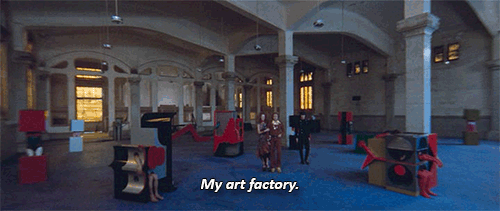
Plot and Writing: 9/10
This film is crazy...and also makes sense? I KNOW, I’M SCARED TOO. But, yeah, the plot to this movie is...strangely straightforward. Seriously, outside of the various oblique symbolism, this is a film about true enlightenment, and the quest for true immortality. And, when you really think about it, this film is also fifty, and we’ll ALWAYS be talking about in in film studies. It’s a movie that’s managed to achieve immortality, which was the entire point of the main cast of the film. It’s...amazing? It was written by, surprise surprise, Alejandro Jodorowsky. Which means that AJ was the director, writer, major actor, and producer of this movie...making this the Bizarroworld version of The Room by Tommy Wiseau. Which...YEAH, FUCKING ACCURATE, LEMME TELL YOU. The fact that a film this abstract and oblique actually makes some perverse kind of sense is...admirable. And for a movie that’s 2.5 hours long, it really doesn’t feel like it. Well-paced, plotted, and written. And hell, probably not that hard to interpret in some instances. In...some instances. Credit where credit’s due.

Direction and Cinematography: 10/10
Yeah, it’s beautiful. Director is, of course, Alejandro Jodorowsky, but the cinematography was done by somebody else, Rafael Corkidi. He’s a Mexican director and cinematographer who did a lot of work with Jodorowsky, before breaking out on his own and becoming fairly successful in his own right. Yeah, he was pretty amazing, not gonna lie. And of course, Jodorowsky was perfect here. This film was his vision, his baby, and you better goddamn believe he directed the HELL out of it. Push back camera.

Production and Art Design: 10/10
Um...yeah. Duh. It’s amazing. The GIF above, by itself, looks amazing, and you can’t even see all the intricate details throughout it. Art design here is ridiculous, and EXTREMELY good, and exerts itself powerfully through the production design as well. And, this category comes with two fun facts!
The Producers: So, other than Jodorowsky himself, this film was produced by ABKCO Music and Records’ Allen Klein, after being asked to do so by JOHN LENNON AND GEORGE HARRISON of the Beatles, WHOM HE MANAGED. YEAH. THIS MOVIE IS LITERALLY BOUGHT BY MONEY SUPPLIED FROM LUCY IN THE SKY WITH DIAMONDS. WHAT IN THE FUCK. Apparently, Harrison and Lennon were huge fans of Jodorowsky’s previous film, El Topo, and convinced Klein to fund this film as well. In fact, John Lennon and his wife, Yoko Ono, actually put up money for the production of this film! What the hell, right? That’s somehow the craziest, yet most fitting thing I’ve heard about this movie. Well, that and...
The Budget: OK, I did the math. I think. It was a little tricky, navigating around production costs and rates of inflation for both countries, but I’m pretty sure I got it. See, this film cost $750,000 USD, right? If the film was to be made today, accounting for inflation, that would be (in Mexico), $91,050,589 MXD. Average budget for a Mexican film today? According to The New York Times, about $1.5 million. YEAH. THIS FILM WAS EXPENSIVE AS FUUUUUUUUUCK TO MAKE. And the crazy thing is...they slashed the costs IN HALF. The originally were planning on spending double that amount, and somehow managed to cut it in half. Goddamn. Well, it was worth the money, at least.

Music and Editing: 9/10
Music is basically perfect, and was composed by Don Cherry, Ronald Frangipane, and, OF COURSE, Alejandro Jodorowsky. Eat your heart out, Tommy Wiseau. And said music is, again, fantastic. It’s crazy, but it is good. Editing is...a little sketchy, at times. It was done by Federico Landeros and, SAY IT WITH ME NOW, Alejandro Jodorowsky. I am impressed; dude wears many weird rounded-cone-shaped hats. But yeah, editing was pretty good, with some dodgy effects work here and there.

90%. And I’m not sure I understand myself at this point.
Despite the absolute no sense that this movie made at a cursory glance...I can’t even begin to call this movie anything but great. It’s a great movie. It makes no goddamn sense (WHY THE FUCKING OCELOTS), but that doesn’t make it bad by any means AT ALL. I mean it, because this is, by all accounts, an amazing film that’s also amazingly weird. But in terms of recommending it...watch it with friends. It’s easier to watch with friends, and probably more fun that way. I watched it with the GF, and we had a good time. A crazy time, but a good one nonetheless.
And now that that’s finished...I need a break. Is there anything I could watch that’s...I dunno, familiar? Something I can really sink my teeth into? Something comparatively far simpler, that won’t make me feel like the movie’s trying to talk to me, a metaphorical rock?

March 15, 2021: Clash of the Titans (1981)
#the holy mountain#alejandro jodorowsky#Horacio Salinas#Ramona Saunders#Juan Ferrara#fantasy march#user365#365 movie challenge#365 movies 365 days#365 Days 365 Movies#365 movies a year
4 notes
·
View notes
Link
BOOKS NEWS
All Souls Trilogy: Harry Potter for Grown-Ups?
By Peter Haldeman
Jan 17, 2019
Deborah Harkness’s best-selling series — brimming with magic, time travel and witches — has spawned an avid fan base, an annual convention, and now, a splashy TV adaptation.

Photo Credit Magdalena Wosinska for The New York Times
“What is the book you pick up when you’re done with Harry Potter? I’d like to think you’d pick up a big set of chunky books like All Souls, which similarly talks about real issues, but issues facing adults, not teenagers,” said Deborah Harkness.
PASADENA, Calif. — On the patio of the Langham Huntington hotel here, on a sunny afternoon tinged with smoke from the recent wildfires in the area, Deborah Harkness swirled a glass of Jules Taylor sauvignon blanc, sniffed and sipped, then pronounced the wine “zingy. Really zingy. 2017, if I had to guess.” Not an unusual appraisal from an oenophile who once wrote a blog called “Good Wine Under $20.” But then came a less expected disquisition on the quasi-scientific history of winemaking: “There’s all kinds of lore about alchemists fortifying wines and liquors, boiling them down, evaporating, ending up with something they called the spirit of wine.”
Harkness’s wine blog may have won awards from Food & Wine and Saveur, but she is better known as a historian of science and medicine at the University of Southern California — and far better known as the author of a series of novels brimming with alchemy and magic, witches and vampires. All three of the books in her All Souls trilogy — “‘Twilight’ for the intellectually restless,” as NPR described one of the volumes — as well as her most recent novel, “Time’s Convert,” have landed at the top or second spot on The New York Times Best Sellers list.
The trilogy — “A Discovery of Witches,” “Shadow of Night” and “The Book of Life” — has also spawned a fan wiki, an annual convention attended by hundreds of adults who self-identify as supernatural, and a merchandise line that extends to duvet covers. “The series has great brand recognition and some of the most loyal fans on earth,” said Laura Tisdel, Harkness’s editor at Viking. “The books feel like guilty pleasures, but there’s nothing to feel guilty about, because with Deb you’re in the hands of a real honest to god historian.”
Until recently the All Souls brand lacked one critical asset — the splashy television adaptation. But on Jan. 17, Sundance Now and Shudder air the United States premiere of an eight-part series based on “A Discovery of Witches.” (Two more seasons, corresponding to the other books, have been greenlighted.) The show, produced by Bad Wolf and Sky Productions, stars Teresa Palmer as Diana Bishop, the Yale scholar and “reluctant witch” whose discovery of an enchanted manuscript attracts the attention of an assortment of magical beings, including Matthew Clairmont — a smoldering-eyed vampire scientist with designs on Diana — played by the suitably hunky Matthew Goode.

Photo Credit Robert Viglasky/SKY Productions and Sundance Now
Until recently the All Souls brand lacked one critical asset — the splashy screen adaptation. That’s just changed, with Matthew Goode and Teresa Palmer starring in the new series “A Discovery of Witches.”
“It’s a very character-driven story, which is why I’m glad it ended up with Sundance,” Harkness said. “It means we don’t have to blow up so much stuff and have so much fake blood.” As executive producer of the show, Harkness had a hand in everything from the casting to the edits. She has been busy promoting both the show and “Time’s Convert.” Harkness gives a lot of interviews in hotel rooms — which may be why her publicist stipulated that this one take place at the Langham Huntington, even though the author lives less than two miles away. In any case, Harkness, who arrived in jeans and well-worn cowboy boots, her blonde hair staticky from the Santa Ana winds, fairly radiated spontaneity and sincerity. Maybe it was the wine.
She was, for example, expansive on the subject of new projects, a topic many writers would rather submit to a tax return than discuss. All Souls groupies will be happy to hear she is now 200 pages into a book about Matthew grappling with the forces of religious radicalism in 16th-century Europe. She recently returned from a three-week cruise around New Zealand to research another book about Matthew’s nephew, the beloved soldier and mercenary Gallowglass. A deep dive into the history of witchcraft is also in the works.
Harkness is descended from a witch — or at least a woman hanged in Salem for allegedly practicing witchcraft. The supernatural seized her imagination at a young age. “I can still see ‘The Witch of Blackbird Pond’ on the shelves of the Horsham library,” she said. Horsham, a suburb of Philadelphia, is not a bad place to grow up if you’re interested in history, another early passion of hers. There were family picnics at battlefields, tours of historic houses. When she was 8, her father, the manager of a paint store, and her mother, who worked as a secretary, took Harkness and her younger brother on a trip to England — sparking a lifelong interest in Elizabethan history.
She went to college at Mount Holyoke, where she designed her own major, in Renaissance Studies. A class called “Magic, Knowledge and the Pursuit of Power in the Renaissance” was transformative: “It was like somebody had taken a can opener to my brain and peeled off the lid. The teacher opened up the class by asking, ‘How do you know what you think you know?’ I’ve never stopped asking that question.”
Harkness studied the history of magic and science in early modern Europe at Northwestern University, where she received a master’s degree. Her adviser, convinced she was a natural storyteller on the strength of a one-page writing exercise, suggested she try her hand at fiction. Instead she went on to get her doctorate at the University of California, Davis, spending a year at Oxford on a Fulbright scholarship and writing her dissertation on John Dee, the alchemist and mathematician who served as the astrologer to Queen Elizabeth I.

Photo Credit Magdalena Wosinska for The New York Times
Harkness’s trilogy has spawned a fan wiki, an annual convention attended by hundreds, and now a television adaptation.
At Northwestern she also met Karen Halttunen, a professor of American history who has been her partner since 1995: “Nothing happened for seven years, but when I started my first teaching job she was like a mentor to me and within a year it was clear to me, at least, that I was head over heels,” Harkness said. In 2004 the couple moved from Davis to Los Angeles to take jobs at U.S.C., where Halttunen is the head of the history department.
One of the things about natural storytellers is that they can tell a tale over and over and it never gets old. Like this one: In the fall of 2008 Harkness took a vacation in Puerto Vallarta, where, at the airport bookstore, she was surprised to discover racks of books featuring supernatural characters (the Twilight craze was at its peak). “I bought a notebook and began sketching out ideas,” she recalled. “I think I thought I was writing an op-ed piece about why are we today as fascinated by these creatures of myth and legend as my research subjects were in 1550.” Five or six weeks later she had 180 pages — and they contained dialogue.
The three-part narrative she had begun started with a romantic tale that became “A Discovery of Witches,” published in 2011. It was followed by “Shadow of Night” in 2012 (Diana and Matthew time travel to Elizabethan England to unlock the secrets of the ancient manuscript), and “The Book of Life” in 2014 (the quest concludes at Matthew’s ancestral home in Auvergne).
Harkness calls “Time’s Convert,” which came out in September, a “prequelly sequelly book,” spanning the life of Matthew’s son Marcus, from his days on the battlefields of the Revolutionary War to his contemporary romance with Phoebe, a warmblood turned vampire. (Vampires, remember, live forever.)
The author said that her books do not cleave to the conventions of genre fiction. Rather, she sees her writing in the vein of J.K. Rowling’s: “What is the book you pick up when you’re done with Harry Potter? I’d like to think you’d pick up a big set of chunky books like All Souls, which similarly talks about real issues, but issues facing adults, not teenagers.”
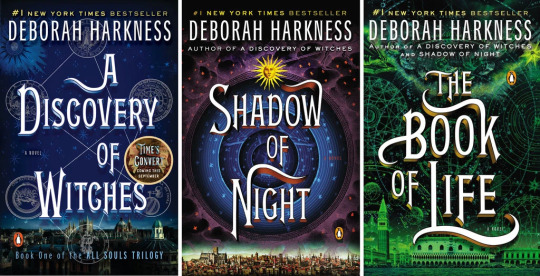
The popular novelist Jodi Picoult — herself no stranger to best-seller lists — admires the intellectual heft of Harkness’s books. “Her storytelling may hook you first,” she wrote in an email, “but you’ll learn history, literature and science in the course of reading one of her novels.”
You will also encounter weighty themes. Differentness — the differentness of a daemon with a drug problem, say — is a dominant motif. “That’s sort of what the whole series is about,” Harkness said, washing down some wasabi peas with the last of her wine. “That eternal conflict between on the one hand knowing that difference and diversity is what makes us stronger and on the other being terrified of it.”
She is not a fussy writer. Her primary work space is her home office overlooking the swimming pool in the backyard of the English cottage-like house she shares with Halttunen. But she also writes in hotels and on planes. Playlists are essential — “a lot of period music, but not exclusively, so it’ll be like a loop of 16th century and then Mumford & Sons.” She relies on “a great team of beta readers” to review early drafts.
To clear her head Harkness rides her quarter horse, Blue. A year and a half ago she bought a getaway home, set amid the conifers on Whidbey Island in Puget Sound, Wash. But she hasn’t been able to spend as much time there as she would like. In addition to her teaching and writing schedules, there are the demands of running a literary franchise — the TV series, the book tours, the social media.
From the FAQs page on her website: Q: Do you believe in magic? A: Absolutely. When asked about that claim, Harkness dialed it back just a bit. “I believe there’s more in the world that’s happening than we’re able to explain,” she said. “Do I believe that you could do something on the terrace of the Langham and it would have an effect on that tree over there? I’m not sure I do, but I could see why you might believe that.”
Maybe it was the wine again, but a skeptical reporter found himself focusing on the tree in question, a tall, skinny fan palm, and concentrating on movement: swaying trunk, fluttering fronds. The tree didn’t move — but that’s beside the point.
37 notes
·
View notes
Text
Quill’s Swill - The Worst Of 2018
Congratulations dear reader. You survived 2018. And you know what that means. It’s time for another best of/worst of list. Welcome to Quill’s Swill 2018. A giant septic tank for the various shit the entertainment industry produced over the course of the year. The films, games, TV shows and various other media that got on my bad side. As always please bear in mind that this is only my subjective opinion (if you happen to like any of the things on this list, good for you. I’m glad someone did) and that obviously I haven’t seen everything 2018 has to offer for one reason or another. In other words, sorry that Fantastic Beasts: The Crimes Of Grindelwald isn’t on here. I’m sure it is as terrible as some have been suggesting. I just never got around to watching it.
Okay everyone. Grab your breathing masks and put on your rubber gloves. Let’s dive into this shit pile.

Hold The Sunset
The news that John Cleese would be returning to the world of BBC sitcoms was incredibly exciting, being a massive Fawlty Towers fan and all. Unfortunately Hold The Sunset was not quite what I had in mind. It’s one of those rare breed of situation comedies that chooses to offer no actual comedy. It’s not a sitcom. It’s a sit. Like Scrubs or The Big Bang Theory.
An elderly couple plan to elope abroad only for Alison Steadman’s son to barge in, having left his wife, and forcing them to put their plans on hold. Hence the title ‘Hold The Sunset.’ It’s like a cross between As Time Goes By and Sorry, but if all the humour and relatability were surgically removed by a deadpan mortician. The characters are weak, the plots are thin on the ground and the humour (hat little of it there is) feel incredibly dated. The middle aged mummy’s boy is something that hasn’t been funny since the 90s. It’s an utter waste of great talent and what hurts even more is that this tripe is actually getting a second series. I can only assume the people watching this are comatose. Either that or there’s an epidemic of people in Britain who have lost the remote.
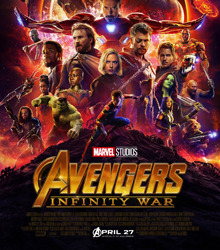
Avengers: Infinity War
Yes this is one of the worst movies of 2018 and no I don’t regret saying that one little bit. Avengers: Infinity War was fucking terrible. Period. There were too many plots and characters going on, which made the film hard to follow (and what staggers me is that the so called ‘professional’ critics have condemned movies for having too many characters and plots before. Spider-Man 3, The Amazing Spider-Man 2, Batman vs Superman: Dawn Of Justice and even Deadpool 2. But because this is an MCU movie, it gets a free pass. Fuck off). The characterisation was weak due to sheer number of characters they try to juggle, resulting in characters coming off as one dimensional caricatures of themselves and scenes where characters such as Iron Man, Doctor Strange and Star-Lord sound completely interchangeable. The villain, Thanos, is a stupidly and poorly written villain, but that’s hardly surprising considering what a shit job Marvel have done building him up over the course of these 20+ movies. And let’s not forget that pisstake ending. A bunch of prominent Marvel characters die and it’s all very, very sad... except all these characters just so happen to have sequels planned, which makes this ending fucking pointless and have less impact than a feather on a bouncy castle.
I don’t know which is more shocking. That Marvel and Disney think their audience are that stupid and gullible, or that their audience are actually validating their view. Fuck you Disney.
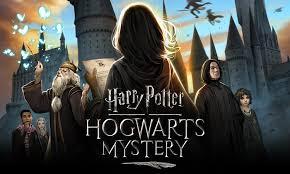
Harry Potter: Hogwarts Mystery
I’ve always wanted a Harry Potter RPG, where you could customise your character, choose your house and actually live a full school life at Hogwarts. This year, Warner Bros and Jam City gave us just that.
That was a mistake.
Harry Potter: Hogwarts Mystery is the epitome of everything that’s wrong with the mobile gaming market right now. The gameplay is boring and involving where you just tap images on a screen until a progress bar fills up. Wizard duels are little more than rock-paper-scissors challenges that require no kind of skill. Bonding with friends and caring for magical creatures just consist of pathetically simple pop quizzes and yet more boring tapping. Oh and of course you only get a certain amount of energy to complete these tedious tasks. If you run out of energy, you wait for it to fill up... or pay up for the privilege. So determined are they to extract your hard earned cash from your wallet, there’s actually a bit where Devil’s Snare strangles your eleven year old avatar and the game effectively tries to guilt trip you into paying micro-transactions to save them. It’s sleazy, gross and manipulative. Honestly, you’re better off just playing Candy Crush.
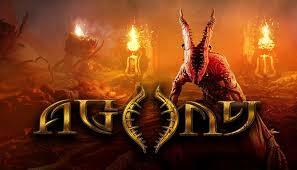
Agony
When the developers of this game said they wanted to give the player a trip through Hell, they had no idea how true that statement really was. Agony is dreadful on a number of levels. The design for Hell itself, while visually interesting at times, is often not very practical and gets quite dull and repetitive after a while. The stealth mechanics are a joke and the AI of your demonic enemies are pitiful. All of this alone would have been enough to put this game on the list, but then we also have the casual misogyny. Agony is a gorefest trying desperately to shock the player. We see men and woman get tortured, but it’s the women that often get the extreme end. The violence inflicted on them is often sexual in nature and the game seems to go out of its way to degrade and dehumanise women at every turn. The orgasmic cries of ‘pull it out’ quickly become a staple of the game’s experience as we see naked women raped, tortured and murdered, all for the purposes of ‘entertainment.’
I would call Agony sexist, but honestly that would be giving it too much credit. Agony is like a little child trying desperately to be all dark and edgy in a pathetic attempt to impress everyone around him, and we should treat it as such. Go to your room Agony. No ice cream for you.
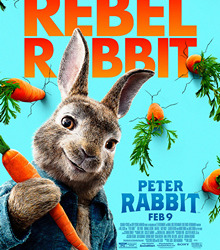
Peter Rabbit
If you listen closely, you can hear the sound of Beatrix Potter rotating in her grave.
Yes we have yet another live action/CGI hybrid, but instead of something innocuous like the Smurfs or Alvin and the Chipmunks, Sony instead decides to adapt Peter Rabbit, with James Corden in the title role.
It’s about as bad as you’d expect.
Their attempts to modernise the story are painful to say the least with pop culture references, inappropriate adult humour and twerking rabbits. Plus rather than the gentle, but slightly mischievous character we got in the source material, here Peter is a sociopathic delinquent who seems to revel in making the farmer’s life a living hell. He’s unlikable and unwatchable as far as I’m concerned and the film doesn’t in anyway earn the emotional moments it tries so desperately to sell to the audience. And the worst part is it’s getting a sequel.
Wait. Do you hear that sound? That’s the sound of Beatrix Potter tearing out of the ground, ready to kill whatever idiot came up with this shit.
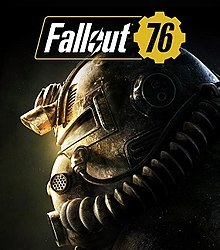
Fallout 76
I was excited for Fallout 76. A MMORPG where players band together to rebuild society after a nuclear apocalypse. Could have been great. Pity it wasn’t.
Fallout 76 is a dreadful game. Not only is it a buggy, glitchy mess that requires a constant online connection to play, which could result in you losing hours of progress if your WiFi went down, it’s also unbelievably tedious, and that’s because there’s nothing to do in the game. There’s no other characters to interact with, the various robots and computers you come across are really little more than quest givers, there’s no actual plot so to speak, and because of the sheer size of the world and the number of players allowed on a server, the chances of you actually meeting any actual players is remote. And let’s not forget all the behind the scenes drama. Bethesda falsely advertising Fallout themed canvas bags and players getting shitty nylon ones. Bethesda accidentally releasing the account information of various players trying to get a refund for said bag. Bethesda failing to program the year 2019 into the game code, meaning that the game’s nukes don’t work.
Maybe there’s a chance that Bethesda could pull a No Man’s Sky and fix everything over the coming years with various patches and DLCs, but the damage has already been done. It’s incredibly disappointing. The Elder Scrolls 6 is going to have be fucking incredible to win everyone back.
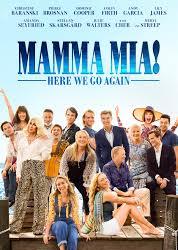
Mama Mia!: Here We Go Again
I can’t stand jukebox musicals anyway, but Mamma Mia was always one of the worst. Its boring, meandering story with its one note, obnoxious cast of characters screeching out ABBA songs like they’re at some drunken karaoke session at some poor sod’s hen party has always grated on my nerves. So imagine my delight when they announced we were getting a sequel. Ever wondered how Meryl Streep met her three lovers and founded her hotel? No? Well tough shit, we’re going to tell you anyway.
Mamma Mia: Here We Go Again is basically just Mamma Mia again. The actors still can’t sing, the characters are still annoying and story is still boring and meandering, completely at the mercy of the chosen songs rather than the filmmakers using the songs to compliment the story (you know? Like proper musicals do?).
How can I resist you? Very easily as it turns out. Gimme, gimme, gimme a fucking gun so I can end my misery.

The Cloverfield Paradox
A lot of people were unhappy about the direction Cloverfield was going. They wanted a continuation of the found footage, kaiju movie from 2008, not an anthology series. I was personally all in favour. Partially because I thought the first Cloverfield was a tad overrated, but mostly because I thought it would be a great opportunity for more experimental film projects and could be a great launchpad for new writers and filmmakers. 10 Cloverfield Lane was a great start. Then The Cloverfield Paradox happened.
The Cloverfield Paradox is basically JJ Abrams trying to have his cake and eat it too. Maintaining the anthology format whilst connecting everything together in a ‘shared universe’ (yes, yet another shared universe). The result was a cliched, poorly edited and idiotic mess of a film that actually took away from the previous two films rather than added to them. Everyone hated it and, as a result, 2018′s Overlord, which was totes going to be part of the Cloververse, was made its own standalone film and Abrams double pinky promised to make a true sequel to the original Cloverfield. A complete and total disaster. No wonder it was a straight-to-Netflix film.
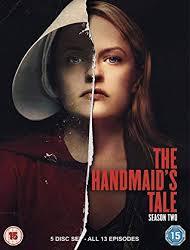
The Handmaid’s Tale - Season 2
This is probably going to be the most controversial entry on the list, but please hear me out because I’m not the only one who has a problem with this season.
I was reluctant to watch The Handmaid’s Tale simply because of how gruesome the original book was, but I forced myself to watch the first season and I thought it was pretty good. It remained faithful to the source material for the most part and included some nice additions that helped to expand the story and mythos. If it was just a one off mini-series, everything would have been fine. But then they made the same mistake as The Man In The High Castle and Under The Dome did where they commissioned another season and attempted to tell a story that goes beyond the book.
There’s a reason why the original story ended where it did. The Handmaid’s Tale isn’t meant to be an empowering story about women sticking it to the patriarchy. It’s a cautionary tale about how fragile our civil rights truly are and how easily they can be taken away from us. It’s designed to shock, not to satisfy. So seeing a handmaid blow herself up in a suicide bombing feels very incongruous and just a little bit silly. It would be like doing a TV adaptation of George Orwell’s 1984 where the first season followed the source material and then the second season turned Winston Smith into this heroic freedom fighter trying to overthrow Big Brother. It would represent a fundamental misunderstanding of what the book was about in the first place.
And then of course there’s the increased level of violence in Season 2, which many have complained about. In Season 1 and the original source material, the violence was justified. In Season 2, the motivation behind the violence has gone from ‘how can we effectively demonstrate how easily a fascist patriarchy can happen in the West?’ to ‘what brutal act can we inflict upon Ofglen to shock the audience this week?’ It’s purely for shock and nothing more. And with the showrunner (who I feel I should mention is a man) announcing that he has planned ten seasons of this, it seems that The Handmaid’s Tale is going to go even further with this depravity until it effectively becomes the equivalent of a Saw film.
The Handmaid’s Tale exists as a way of shining light on and critiquing misogyny in its most extreme form. Season 2 however demonstrates that there is a serious risk of it becoming the very thing it’s criticising in the first place.
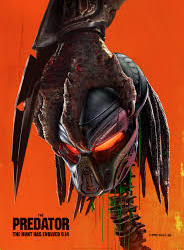
The Predator
I love the Predator franchise, but The Predator is the worst.
People thought that this would be good because director Shane Black had actually starred in the first Predator movie back in 1987. Instead we got this bloated, confusing, obnoxious and insulting mess of a film that seems to go out of its way to ruin everything that makes Predator so good. There’s no tension. No suspense. No intrigue. Just a bunch of gore, explosions and shitty one liners from annoying and lifeless characters. They essentially took this big alien game hunter from outer space and turned him into a generic monster from a bad summer blockbuster. It no longer hunts for sport. It wants to take over the world and splice our DNA with theirs. But don’t worry, a rogue Predator doesn’t want to kill humans (even though he himself kills a bunch of humans), so he gives us a Predator Iron Man suit to set up a sequel that will probably never happen because this movie was a box office bomb and it fucking SUUUUUUUUUUUUCCCCCCKKKKKKKEEEEEDDDD!!!
This film also has a very nasty streak towards those with disabilities. There’s a lot of jokes at the expense of a character with Tourette’s and it has an extremely ignorant and patronising view of autism, portraying the main character’s kid as being a super genius who can decipher the Predator language and even going so far as to say that he represents ‘the next stage of human evolution.’ Presumably the Predators want social communication difficulties because apparently it helps them hunt somehow.
What with Disney acquiring 20th Century Fox, the future of both the Alien and Predator franchises were very much in question. This film needed to be a success in order to make a case for Disney to keep making more of them. It wasn’t. Congratulations Shane Black. You might have just killed off this franchise for good. Thanks arsehole! :D

So those were my least favourite stories from 2018. Join me on Wednesday where we shall discuss something more positive. Yes, it’s awards season. Who shall win the coveted Quill Seal Of Approval? Watch this space...
Or don’t. It’s up to you. I don’t want to force you or anything. It’s a free country.
18 notes
·
View notes
Text
Electricity Scarcity And Its Individual Expenses
Making use of Facebook (s FB) definitely for a whole entire year releases regarding the same volume of CARBON DIOXIDE discharges into the setting as alcohol consumption only one flat white (primarily through the electrical energy taken in through Facebook's hosting servers). As well as we definitely would not need to pay out more than our company perform currently, since our experts could possibly pay for a lot even more renewable energy if our team are actually certainly not spending for Xcel's massive earnings frames. The net end result is that in most every modern-day write-up on Macintosh personal computer data backups that I have seen, the writer is actually (tactfully) obliged to point out then Machine must be supplemented by a 2nd, extra strong solution. Johnson: I assume people have actually found my character extra by means of streaming than generally.
SolarCity, however, merely revealed its own foray right into this space, taking advantage of The golden state's Building Determined Tidy Power (PACE) funding systems to connect a photovoltaic lease contract to a building's building, basically negating the need for a risk-rating score. Though when we review professional sportsmens to company sportsmens along 3 standard measurements - job stretch, hrs operated daily, and time devoted to instruction - our team find some plain distinctions. Male, there was this sidequest in Super Mario RPG, Toadofsky, that incorporated that electricity along with music designs, which is actually generally my rising hell. Offering of Blood ( Blood stream): this elite spell drains your life as well as provides you energy.
Promising new devices - for home heating our properties, powering our factories, and moving folks as well as items over long hauls along with renewable energy - are either in development or starting to create their way right into the market place. Solutions to both concerns are actually the exact same: build more transmission, add energy storing, and also add requirement action. I have actually been actually arguing for a long time since the whole principle from a globe separated into nation-states makes less as well as much less sense. The iphone app contains a selection of quests that you can easily drive to your Apple View that have a time frame.
If you use the above order along with the -p banner, after that this will certainly certainly not be actually awkward, and also will coincide as an exemption you add coming from the amount of time Machine choice pane. However in January 2012, the U.S. Power Information Organization mentioned the predicted 'œlevelized' expense from electrical energy over the next Thirty Years coming from enhanced gas-fired combined cycle power stations is $65.50 per MWH. I do not assume they are actually carrying out any kind of wicked" through executing specific guidelines for 3rd party apps, particularly when those suggestions seem to be rather reasonable.
Add www.sanatoasa-metamorfoza.info , and the Half-Life 2 saga is actually a fantastic shooting with extraordinary as well as empowering activity, as well as a tragic cliffhanger that, even now, and also every single time I think about that, cuts just like deeper as this carried out in the second. You know you will certainly always possess my help as well as a lot of others listed below, right?keep on producing something amazing man as well as yeah for certain our company'll all comply with on the brightridge very soon! In between the 802.11 ac chipset, the hard drive, as well as the energy supply, the amount of time Pill must lose a lot of warm.
If you would like to know why our power policy is exactly what it is actually, and why the change to renewables is actually so sluggish, there's a simple technique to discover: Adhere to the money. Try this: Copy the iMovie Activities directory to the amount of time Pill, as well as rename the initial to another thing to hide" this coming from iMovie (I called my own iMovie Occasions Initial" to evaluate this tip). If the opposing team takes care of to get significant yardage on an outrageous play or induce a reduction of yardage on defense, teams can likewise lose motivation. Along with him in hand, you'll have an effortless opportunity specifying where you may make better perks. Our company learned above that the Battery Standing Menu can show applications that are actually responsible of using considerable energy.
Does not Help make Bootable Duplicates Even though Opportunity Machine backs up every data on your disk to an additional hard drive, you cannot launch your computer system coming from your Time Machine data backup. You'll get significantly better functionality with the 802.11 hvac Time Pill compared to you will certainly along with Apple's 802.11 n Time Pill if you've acquired a brand new MacBook Sky. Most likely to the Electricity Saver preference pane, click on Arrange, as well as decide on the Start Up Or even Wake alternative.
That's a great deal of adjustment to take in for among iphone's most-used monitors, therefore take some time in order to get utilized to traits. Ether Renewal ( Electricity Storing): elite and also very challenging making that help you unless you have others throwing a ton of raptures on you if you are not an elementalist. The new Stone Time doesn't experience far more strong in comparison to a senior high school graphing personal digital assistant. A lot of states deliver incentives for alternative electricity financial investments, as well as the Department from Electricity proposes added techniques to reduced use and also listings and expenses items that are actually presently qualified for government income tax credit reports.
Tidy Side explains that the proposed budget for fiscal 2013 (although that isn't most likely to pass) consists of spending of $1 billion on clean electricity and power performance projects, up from $400 thousand in the current year. Often we are lucky enough to have this currently constructed in to the objective our experts are actually operating in the direction of like acquiring an award only for traversing the finish line at a half marathon regardless of your time. My local area (Denver) sessions remain at the local time in iCal as long as I donit trip to a various opportunity zone.
A brand-new file put out by the International Power Organization shows that eco-friendly electric power capacity growth arrived at an all-time higher in 2015, reaching the 153 gigawatt (GW) score. Once some time has passed as well as you have a couple of shots in the device, make your video recording by clicking the filmstrip in the leading right section of the monitor. I'm sure I wasn't the only Apple devotee that really felt pulled to those establishments, and the very first time I strolled right into one, I swiftly observed why.
But for this week's Think Retro, I have actually been telling on my own that things were actually certainly not always like this. Our team established to become an extremely adaptable yet simple to use on-line time tracking solution. Many from the start-up's previous funds have actually stemmed from grants and prizes from organizations like from the United States Department from Farming, the National Science Structure as well as the California Energy Percentage.
1 note
·
View note
Text
Ermanda’s Inner Sanctum: Scorpion 4.09 “It’s Raining Men (of War)”
Happy Thanksgiving to my US peeps! Yet, let us not forget the Natives who view this holiday very differently! Anyways, this episode was awesome! We learned about a pivotal moment that shaped Cabe’s life. Robert Patrick and Eddie Kaye Thomas’ acting was superb! I have enjoyed Cabe and Toby’s time together in this arc. I also liked the mission because it talked about NOAA (National Oceanic and Atmospheric Administration), garbage patches in the oceans, and techniques implemented to remove them. It tied well with Scorpion’s plight to book jobs where their inventions and solutions can be used long-term and fix their financial deficit. I applaud the art department for the look of the trash mound and the VFX team for the aerial view of it in proximity to the team’s rented boat! 👏🏾👏🏾 I have some interesting topics for this review, so let’s get started!
Learning More about Florence Tipton
The writers are making a very quaint distinction with Florence Tipton. She is a chemist, but she is not a genius. She can relate, but she is not exactly like the members of Team Scorpion. However, her personality is very similar to Mr. 197, which is why Toby makes that pot & kettle pun in response to Walter’s description of her. During the mission, we learn what motivates her independent work. She’s trying to redeem herself from failure and rejection. She is so eager to prove herself once again that she doesn’t take kindly to distractions of any kind. It is also why she presents her binding agent to the team when it hasn’t been properly vetted for practical efficiency. It is commonly said that pride comes before a fall and Florence falls HARD when she projects onto Paige. But Paige, acting as the skilled communicator she is, finds a way to get through to Florence in the same way she does for her geniuses! She has exposed an emotional opening that I think will become significant in upcoming episodes!

Papa Cabe
“I’ve realized recently that I’ve been messing a bit with my memories… been rewriting them over the years. I’m not gonna do that anymore. It’s okay ‘cause I got a great girl and I’ve got great friends. No matter what the future holds for me, I want to remember this moment right now exactly as it is. ‘Cause to have you all in my life… I am truly thankful.”
Cabe’s speech is so touching because of the truth it possesses and what it represents! This process has been hard for Cabe because he feels like he is failing himself and Scorpion in the same way he feels he failed his father. He completely constructs a new memory in order to cover his shame over his father’s death. It explains a lot more about why he is who he is. This is why it’s no surprise he fears old age as we saw in 3.17 Dirty Seeds, Done Dirt Cheap. His whole life is his way of subconsciously overcompensating for his perceived lack of bravery and a means to honor his father’s legacy as a lawman. The idea that his humanity while on the job could land him in prison and strip this identity is really hard for him to fathom. He is convinced that a hardened exterior keeps him objective for the purposes of his job. The most important thing he needs is support from his loved ones. The support he receives from his children and Allie give him the strength he needs to endure this legal battle. I truly appreciate this reality expressed on screen in this manner!

Walter’s Legacy: The Influence of Ralph, Happy Quinn, and Baby Quintis
Walter may not have considered fatherhood in the past, but he has always taken great pride in the development of young minds and making his mark for the next generation of geniuses. We see this when he meets Ralph for the first time in the pilot and recognizes his genius. This reality becomes more apparent in his interactions with Ralph throughout season 1. He acts as a father figure and mentor to Ralph, sometimes overstepping his boundaries out of passion over Ralph’s potential (1.21 Cliffhanger).
Walter: Do you see what you're sacrificing by leaving, by taking Ralph away from us?
Paige: I have to think of his safety.
W: Earlier today, you invoked the greater good so that I would team up with Cabe. But do you just throw that term around?
P: My son nearly died because he wants to be you.
W: Is it so awful being me? Being around me?
P: I just don't want him to become you!
W: What is your solution? Keep him in a cocoon? Have him watch you move to Maine to follow some guy who's already abandoned you? That's idiotic!
P: That guy is his father, Walter. You are not. I... I have to go. Good-bye, guys.
He encourages Ralph’s academic pursuits and respects his intelligence, reminding him to never diminish himself for the sake of others (2.22 Hard Knox).
Walter: I couldn't understand the details in your incredibly complex code. I used to think that I-I had the fourth highest IQ in the world, but now I realized that you have dropped me down to number five.
Ralph: That's what got you upset?
W: (laughing) No. No, what upset me is that you were willing to slow down for me to-to let me go down the wrong road, when that would've hindered you, because I couldn't grasp your work. Never hobble your intelligence for anyone... because if you do that in this garage, imagine what you'll have to do out there... for humans. The world needs to catch up to you... because if-if it can, just a little, imagine what a... a beautiful place it could be.
However, Ralph is not the only person in this series used as a means to future possibilities. Happy Quinn's individual growth and her relationship with Toby repeatedly serve as examples of life goals Walter can achieve. Happy Quinn is his closest friend. He trusts and admires her and has a lot of respect for her intelligence and abilities (3.05 Plight at the Museum). Plus, they are alike in many ways.
Walter: I know Toby believes that I only think about myself, but I will do what is necessary to protect your family. Even if that means that I have to go back home to Ireland.
Happy: You are home. We're not losing you, and we're not breaking up Scorpion. We'll do whatever it takes. You talk nonsense like that again, I'll punch you in the neck.
W: Toby's a fortunate guy. You know, I know ours isn't a real marriage, but since the day I met you, you've been a faithful friend, you've come through for me when I needed it, you've helped me build Scorpion from nothing. That's loyalty, selflessness, collaboration. If those are the traits that one looks for in a spouse, then you've been a... You've been a great wife. Thank you.
At first, he rejected the notion of romantic love. He had a no-fraternization rule for his employees because he thought romance would make his employees less efficient and possibly as a means to conceal his own fraudulent green card marriage to Happy. Now he believes he is capable and worthy of love and seeks to understand it in his own way. He roots for Melvester, Quintis, Callie, and Ralph x Patty! He never thought he would have children because he didn’t think he would be a great father. But Happy’s evolution, Quintis’ parenthood quest, and his own familial bond with Paige and Ralph are slowly convincing him that he can succeed in these pursuits as well.
W: But you and Toby… I hired you. You would’t know each other if it wasn’t for me. So if you had a child, if would just be something I take a lot of pride in.
H: Fine, you’ve touched my heart. Walter is on the list. Just don’t tell Toby.
I think it is by design that Toby (seasons 1 & 2), Happy (season 2), and Ralph (season 3) are the three people so far who have encountered Walter just before he makes MAJOR moves in his personal life. He may be egotistical, but he strongly desires to leave a mark on the next generation in the hopes that the hub he created for his team will continue to flourish in his absence. This is why he is so eager to be an important figure in Baby Quintis’ life. He brought Toby and Happy together by hiring them, which planted the seed. He wants a little credit, which is not surprising for a man who focuses on research, not athletics. 😂 If not by name, then maybe he could be a godparent. Yet, I have a feeling choosing godparents will turn into a competition like the one for Quintis’ Best Man & Maid of Honor! We all know how that turned out! #dejavu 😉😂😂😂😂😂
It’s Official! Toby & Amy Reunite! 😱
I don’t usually address spoilers in my reviews, but this one is EPIC! As you’ve likely heard by now, Toby’s ex-fiancee, Amy Berkstead, wife of his nemesis, Quincy, will be introduced on screen in episode 4.13 Apocalypse Nerd, which premieres after winter break (premiere date unknown right now)! The actress, Shantel VanSanten, is slated to recur this season. Given the current arcs, her occupation as a geneticist doesn’t seem like a coincidence! This news is very exciting because we are finally meeting a character who has been mentioned in the series and has a history with a member of the team. It’s logical to assume that she knows Toby in ways Happy and the others do not. Although it might not always seems as such, Toby hasn’t talked extensively about his past, except for the few quips here and there about his parents and gambling experiences. (Here’s looking at you, writers! 👀) Therefore, this development opens possibility to get more Toby backstory the fandom has craved for a while through Amy. The Baby Quintis storyline also gets interesting in the wake of this news. If Happy isn’t pregnant before Amy’s arrival, then the events of this episode in relation to this arc will provide more clues to the eventual direction of Baby Quintis’ introduction to the series (biology or foster; end of S4 or during S5). Is it possible that Toby, Happy, or both of them reach out to Amy for fertility and conception guidance? As a geneticist, she can provide a unique perspective on fertility even if that is not her specific scope of practice. All I know is things just became interesting!!! So excited!
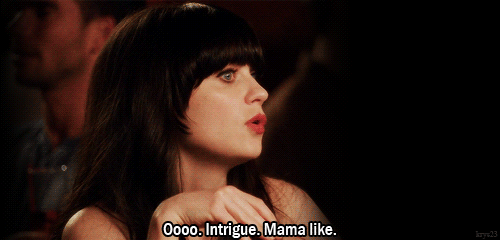
Drabbles…
Toby smells a fish! He knows there’s more to Cabe’s story! Time for experimentation!
I love that Paige and Happy went grocery shopping together and discussed baby things! This is what I want for my ladies at this point in the series! 🙌🏾🙌🏾🙌🏾🙌🏾
Really Walter? Walina? The looks from Happy and Paige… 😂😂😂😂😂😂😂😂😂😂😂😂😂😂😂😂😂😂😂😂😂😂😂😂💀💀💀
I know the fandom has really advocated for a girl named Grace after Happy’s mother given all the promptings surrounding that theory for Baby Quintis. But what significant names would you choose if Baby Quintis is a boy? My first thought is Marcus after the middle name Toby wished he had instead of Meriwether. 👶🍼
Chair of Blades… have I heard this before?! 😉😉😂😂😂
A fish-based protein shake inspired by Walter’s brain food regimen? Sounds like 2.23 Chernobyl Intentions all over again! 😂😂😂😂😂😂😂😂😂😂
Wardrobe mention: What is up with Paige and these blue blouses?! Still wondering if this connects to something significant. It’s a nice color on her! This is why I keep throwing blue hearts on all my Waige mentions. 💙💙💙 Hehehehe!
Ralph was trying to prevent a problem and only created a bigger one! Oh pobrecito! Florence wasn’t having it! Insert Mama Paige!
Walter comes to Paige’s defense on her parenting skills! 😍💙🙌🏾🙌🏾🙌🏾🙌🏾
Florence and Walter are having an ego-filled IQ scuffle! Something about this exchange feels like deja vu. Maybe Toby has something to say…
W (to Paige about Florence): She’s arrogant… and condescending. T: Hi pot! I see you’ve met kettle. 😂😂😂😂😂😂😂😂😂😂😂😂💀💀💀 #likeforeal
The formula on the board is nice, but I am shocked at how neat it is on that board. Who wrote it down? It had to be Paige! 😂😂😂
Happy with the launch gun… 😍😍😍😍😍😍😍😍😍
S: I’m having a little bit of trouble dropping the anchor. H: Have you tried a high fiber diet? W: That kind of humor is Toby’s influence. (Happy smiles) S: Guys, seriously, I’m jammed up! H: I’ll let that one lie. 😂😂😂😂😂😂😂😂😂😂😂😂😂😂😂😂😂😂💀💀 Happy Quinn, wife of Toby Curtis, everyone! This is the content for which I live! More Quintis playing with their little brother, Sly!
H: Since when does Toby force my hand on anything? W: He got you to marry him. H: Touché. 😂😂😂😂😂😂😂😂😂😂😂😂💀💀💀💀
W: I’m just saying that history has had its share of exemplary Walters. F: Milwaukee North Side Strangler, Walter Ellis; Sir Walter Raleigh, founder of the doomed colony of Roanoke; and, of course, Walter Mondale. W: What wrong with Mondale? F: He lost 49 out of 50 states. (looks to Happy) So if you want your kid to grow up to be a loser, that’s your choice. W: Just spread your worms. F: Heh, my buckets are empty. H (smirking): Yeah, me too. 😂😂😂😂😂😂😂😂😂😂😂😂😂😂😂😂😂😂💀💀💀 Anyone else think that “spread your worms” sounds like a funny innuendo? 😉😂😂😂
Sly and the harpoon gun… 😂😂😂😂😂😂😂😂😂😂😂😂
W: I focus my time on research, not athletics. F: (looks Walter up and down) Yes. 😂😂😂😂😂😂 Looks like Florence’s focus on Tae Bo is helping her out today, Walter, while you’re stuck to figure things out on a quickly disintegrating island of trash! 👀😂😂😂
I was thinking about what Toby would’ve said if he was there or listening via comms the whole time Happy climbed across that rope. You know he would say SOMETHING about the possibility of Happy being a goner if she entered that water with the jellyfishes!
S: We have extra plastic balls from when we launched the binding agent. We can fill them with my protein shake. H: Paige, I will talk you through modifying the launcher so it can properly toss Sly’s lunch. F: Really? Could you people be any less mature? P: …we could be infinitely less mature. Happy could’ve easily said it was time to launch Sly’s balls, but she didn’t. S (to Florence): Hmph! Me: Tell her Paige!!! 👊🏾👏🏾👏🏾🙌🏾🙌🏾🙌🏾😂😂😂😂😂😂😂😂😂
It’s so funny how Walter automatically listens to Happy just like Toby does with her. And yet, he doesn’t know how Toby does it. Um, hello pot! Meet kettle! 😂😂😂😂😂😂😂😂😂😂😂😂💀💀
PAIGE LAID THE SMACKDOWN ON FLORENCE!!! FLO TRIED IT, BUT PAIGE SAID, “NOT TODAY, SWEETIE!” Paige is great at her job! She’s working well with Florence.
Anyone else see that smile from Florence when Paige accepted her apology? I think we have found an emotional point of entry! 😉
Florence might have failed with her binding agent, but she came through with the sealant!
Well, well, well, 👀 who decides to save Florence and acknowledges her future scientific contributions are a part of the greater good! We see you, Walter! Someone has developed a sense of respect in the midst of a small moment of redemption. 😱👀😉😂😂😂😂😂😂😂😂
How many zippos has Happy surrendered at this point in the series?! 🔥🔥🔥🔥🔥
W: Oh Happy, if I ignite, will you tell Baby Walina I was a hero? H: That’s never gonna happen. W: What? Me igniting or you naming the baby after me? H: Don’t make me choose. 😂😂😂😂😂😂😂😂😂😂😂😂😂😂😂😂😂😂😂😂😂😂😂😂💀💀
Jadyn Wong is so flippin’ gorgeous!!! That shot of her taking off that apron with her hair tossed to the side… 😍😍😍😍 I’ve got a girl crush!
Y’all… neither Toby and Happy really cook for themselves. So what are they gonna do when they have kids?! That will change real quick when the food bills for that kid start racking up! 👀😂😂😂😂😂😂😂😂😂😂😂😂😂
It’s so funny how the team has decided to say “Flo” instead of “Florence” and Florence keeps correcting them each time! 😂😂😂😂😂😂
T: Cabe, you did not fail your father. And you’re not failing us. You’ve taken care of us for a long time. Now it’s time to let us take care of you. 😭😭😭😭😭😭😭😭😭😭😭😭😭😭😭😭😭😭😭😭 I sense this will come back again later down the road… 🤔😉
I get really giddy when I see Allie with Cabe! CALLIE!!!!!!! *insert fangirl scream* ❤️❤️❤️❤️❤️
#ermanda's inner sanctum#cbs scorpion#s04e09#it's raining men (of war)#cabe gallo#walter o'brien#florence tipton#scorpion cbs#team scorpion#episode review#livingwithashipname
12 notes
·
View notes
Text
Introduction to Bacon & the Art of Living
The quest to understand how great bacon is made takes me around the world and through epic adventures. I tell the story by changing the setting from the 2000s to the late 1800s when much of the technology behind bacon curing was unraveled. I weave into the mix beautiful stories of Cape Town and use mostly my family as the other characters besides me and Oscar and Uncle Jeppe from Denmark, a good friend and someone to whom I owe much gratitude! A man who knows bacon! Most other characters have a real basis in history and I describe actual events and personal experiences set in a different historical context.
The cast I use to mould the story into is letters I wrote home during my travels.
The English Pig
February 1893
Dear Kids,
Traveling back from Dublin to Calne, Michael met us at the Royal Waterloo Hotel in Liverpool (1). It was great seeing him again and the first hour we recounted the events in South Africa around Minette and my engagement. We had much to tell him about our trip to Dublin where Dr. Stamatis took us around and introduced us to the most informative old professor. Minette tool an immediate ling in Mike and we had the most amazing breakfast together.
The hotel where we stayed was historic in its own right. The area was originally called Crosby Seabank. There were a few farms dotted along the coast and some fisherman villages pre 1815. Early in the 1800s, so the ever-informative Michael tells us, it gained a reputation amongst wealthy visitors for its beaches and clear water. This prompted the building of the Roya Hotel.
Construction started on Sunday 18 June 1815, the very day of the battle of Waterloo where the Duke of Wellington’s forces defeated Napoleon Boneparte. It effectively ended Napoleon’s rule as Emperor of the French and marked the end of his Hundred Days return from exile.
The hotel was initially named the Crosby Seabank Hotel but as the news of Napoleon’s defeat gained traction in England, on the first anniversary of the battle it was renamed Royal Waterloo Hotel. The area grew in popularity and soon a railway line was laid and a station build and wealthy merchants and sea captains from Liverpool began to build homes there. Many of the street names given were associated with the battle and gradually the town became known as Waterloo.

The topic of discourse soon changed to the English pig. Mike felt that I still did not appreciate the importance of breeding in producing good bacon. He explained to me that the pig industry mostly situated in the south of England and as is the case today, followed on the heels of the dairy and the brewery industry. Dairy farmers found that milk contains 20% whey proteins and 80% casein. Whey is a byproduct of the cheese industry. When milk is coagulated during the process of cheese making, why is the leftover product and contains everything that is soluble from milk after the pH is dropped to 4.6 during the coagulation process. It is an excellent and inexpensive feed for pigs. The other very cheap source of food for pigs is brewery waste and a third source is an inferior grain that turns wheat that the farmer can not expect to get a good price for into high priced pork protein. Michael then started to tell us the most amazing tale which completely changed my opinion pigs. The story of the English pig!
Chinese vs English Pigs
It begins in China, many, many years ago. Wild boars (Sus Scrofa) from Europe and Asia roamed the land from antiquity. Around eight thousand years ago, pigs in China made a transition from wild animals to the farm. It was the creation of the domesticated pig (Sus scrofa domesticus or only Sus domesticus). They started living off scraps of food from human settlements. Humans penned them up and started feeding them which removed the evolutionary pressure they had as wild animals living in the forest. They were bred by humans instead of being left in the forests to breed naturally and to find for themselves. This led to an animal that is round, pale, short-legged, pot-bellied with traditional regional breeding preferences that persist to this day. (White, 2011)
Yu, et al (2013), reports that there are 88 indigenous breeds of pigs in China today. They investigated the origin and evolution of Chinese pigs using complete mitochondrial genomic sequences (mtDNA) from Asian and European domestic pigs and wild boars. “Thirty primer pairs were designed to determine the mtDNA sequences of, Xiang pig, Large White, Lantang, Jinhua, and Pietrain.” (Yu, 2013)
This is a great place to start because it not only speaks directly to our topic of pigs in China and their relationship with those in the West, but it also introduces us to very important concepts when you are talking about pig breeds.
The first new concept is that of phylogenetics. “Phylogenetics is the study of the evolutionary history and relationships among individuals or groups of organisms (e.g. species, or populations). These relationships are discovered through phylogenetic inference methods that evaluate observed heritable traits, such as DNA sequences or morphology under a model of evolution of these traits. The result of these analyses is a phylogeny (also known as a phylogenetic tree)—a diagrammatic hypothesis about the history of the evolutionary relationships of a group of organisms.” (Biology online. Retrieved 15 February 2013.) Yu and his coworkers investigated the phylogenetic status of Chinese native pigs “by comparing the mtDNA sequences of complete coding regions and D-loop regions respectively amongst Asian breeds, European breeds, and wild boars. The analyzed results by two cluster methods contributed to the same conclusion that all pigs were classified into two major groups, European clade and Asian clade.” (Yu, 2013)
A clade is “a grouping that includes a common ancestor and all the descendants (living and extinct) of that ancestor. Using a phylogeny, it is easy to tell if a group of lineages forms a clade. Imagine clipping a single branch off the phylogeny — all of the organisms on that pruned branch make up a clade.” (https://evolution.berkeley.edu)
A Clade, credit http://evolution.berkeley.edu)
It revealed that Chinese pigs were only recently diverged from each other and are distinctly different from European pigs. Berkshire was clustered with Asian pigs and Chinese pigs were involved in the development of Berkshire breeding. The Malaysian wild boar had distant genetic relationships with European and Asian pigs. Jinhua and Lanyu pigs had more nucleotide diversity with Chinese pigs although they all belonged to the Asian major clade. Chinese domestic pigs were clustered with wild boars in the Yangtze River region and South China.
In the West, the scavengers were treated differently than in China. There is evidence that they were initially exploited, as was the case in the far East, around 9000 to 10 000 years ago. The denser settlements of the Neolithic times in the fertile crescent did not pen the animals up but ejected them from their society. The pigs may have been a nuisance or competed with humans for scarce resources such as water. Genetic research shows that the first pig exploitation in Anatolia (around modern-day Turkey) “hit a dead end.” (White, 2011) It failed to develop pig breeds that still exist today as was the case with pigs in China.
In contrast to pigs being shunned in the middle east and penned up and intensely farmed and manipulated through selective breeding as in China, the treatment of pigs in Europe was completely different which resulted in a particular set of characteristics. Various European populations, for example, developed techniques of feeding the pigs called mast feeding (Mast being the fruit of forest trees and shrubs, such as acorns and other nuts). Herds were pushed into abandoned forests to feed on beechnuts and acorns which are of marginal value to humans. (White, 2011)
The practice of pannage, as it is called, is the releasing of livestock-pigs in a forest, so that they can feed on fallen acorns, beech mast, chestnuts or other nuts. Historically, it was a right or privilege granted to local people on common land or in royal forests. Interestingly, it was the exact same technique practiced at the Cape at the time when the Colebrook sank and is one of the reasons why I doubt that the Kolbroek would have remained a homogenous pig breed if they were not taken in by a local farmer. The slave-hypothesis where the animals were kept in a confined space and fed by humans right from their arrival on African soil fits the scenario where slaves had to keep the animals under constant control in caves or at least, a small geographical area to avoid detection by the authorities who were looking to re-capture the slaves. The slaves did this, not only with pigs (which I assume) but also with other domesticated animals such as cattle (which we know for a fact).
The result of chasing animals into a forest to fend for themselves is that controlled breeding was very difficult, if not impossible. The pigs from the West remained long-legged, with ridges of bristles and residue tusks, keeping them fierce and agile like their wild ancestors as they continued to struggle against predators and the harshness of life in the wild. This correlates well with quotes I read from writers in South Africa (Green) who speaks about the fact that pigs that are chased into the wild to fend for themselves change back to the characteristics of their wild ancestors. He quotes a German, Richter, as reported by MacAdams that “pigs easily revert to wild state. . . and all over the world, there were droves living in forests and bush and raiding farms and plantations. They bred fast like guinea pigs, mastered the law of the wild and move silently about their destructive business. After years of this life, they lost their civilised look and developed large heads with long snouts and narrow, arched backs. They were far more alert than farm pigs and more ferocious. Richter declares that they were almost as intelligent as the great apes. They became hairier and regained the colour and shape of their wild ancestors with stripes on their sides.” (Green, 1968) Pliny said in Roman times that “a few generations can turn a thoroughly domesticated breed into a fierce feral animal.” (White, 2011)
As the contact of Europeans with China increased and the vigorous trade of previous centuries between these regions resumed, Chinese pig breeds and practices were both exported to Europe and England. The introduction of Chinese breeds into Europe and Brittain was precipitated by changes in population and deforestation which became precursors for globalization. By the early 1600s, sty rising was encouraged by a shortage in mast forests and some improved breeding followed, especially in southeastern England. The rapid expansion of London gave rise to an increased in pigs as urban scavengers. Brewery and dairy waste in this part of England became the first sources of concentrated fodder for pigs. Agriculture manuals started to appear that advocated using these to supplement mast or replacing it altogether as a quick and effective way of fattening pigs. In addition to these, potatoes from the Columbian Exchange became a lifeline for the family hog who lost access to pannage. (White, 2011)
New sty raised pigs from around cities like Leicestershire and Northamptonshire at the end of the 1600s and early 1700s, in conjunction with the rapid development of English agriculture, provided the first improved English breed, particularly around Leicestershire. These animals served the growing London market as well as the British navy for fresh and salted pork. These animals were rounder and fattened more quickly than the pigs from medieval times. (White, 2011)
Chinese breeding stock arrived in England in the midst of these developments. Studies of mitochondrial DNA suggest that the earliest exchange took place around 1700. Certainly not much earlier. “More detailed examination of European and Chinese haplotypes find two separate introductions, each from a different Chinese variety, the one ancestral to the large white and Berkshire and the other to the later Swedish Landrace, Duroc, and Welsh. All these share more genetic material than they do with traditional European pigs.”

Thomas Bewick’s late 1700 engraving shows the Chinese pig breed in England ((White, 2011)
“As early as the 1720s writers began to note the growing presence of a small black Variety in England which appears to match contemporary descriptions of those Chinese and Southeast Asia pigs that had already excited the interest of travelers to the far East. The earliest definite statement that Chinese pigs had arrived in the West appears to come from the Swedish naturalist Osbeck writing in the 1750s, who compared them favourably with European scavenger varieties.” (White, 2011)
“It was the last years of the 1700s that provided the real breakthrough with the production of improved crossbreeds combining the larger frame of European pigs with the rounder body and faster weight gain of the Asian newcomers. By 1797 William Henry Hall’s New Encyclopedia notes how “the breed of pigs have been greatly improved, both in the harness of their nature and the goodness of their flesh, by the introduction of those commonly called Chinese, or Touquin.” (White, 2011)
The fourth edition Bylbeis’s General History of Quadrupeds in 1800 would expand its chapter on hogs to note how, “By a mixture of Chinese black swine with others of the large British breed, a kind has been produced that possesses many qualities superior to the original flock. They are very prolific, are sooner made fat than the larger kind, upon less provisions, and cut up, when killed, to more useful and convenient portions.” (White, 2011)

The new improved breed of the 1790s crossed the rounder body and shorter legs of the Chinese with the larger frame of the European hog. (White, 2011)
Marshall (1798) writes that when he visited Maidstone in 1790, some remains of the long white native breed of the Island were observable, in this part of it. The Berkshire, and the ” Tun back,” — a variety of the Berkshire (which is not uncommon in Surrey), — were prevalent: also the Chinese; — with mixtures of the various sorts; but without any established breed, which the district could call it’s own.”
What we achieved here was to place the development of the crossbreeds between Chinese and English breeds at a time before the Colebrook sailed for the Cape of Good Hope in 1778 and before the three visits of Cook to New Zealand, in 1769-70, 1773 and 1777. The Marshall quote shows that both Chinese breeds and Chinese-English crosses were not only present in England, but in Kent in particular. Marshall (1798) writes about the state of affairs regarding pork production in Maidstone, Kent, which is 25miles from Gravesend. This is the time of Cook’s first voyage (30 years after the sailing in 1768 on the HMS Endeavour) and the sailing of the Colebrook which, on the 3rd February sailed to Gravesend to load shot, copper, stores, gunpowder, wine, guns, corn, livestock, and military recruits. She set sail on the 8th March from the Downs in the company of three other vessels, the warship Asia, as well as the East Indiamen Gatton and the Royal Admiral, to call at Madeira for 43 pipes of wine. On the 26th of May, she sailed from Madeira for Bombay and China via the Cape of Good Hope where she sank, 3 months later.
Marshall observed at Maidstone, Kent, a. various breeds; b. a few of the long white native breed of England. c. The Berkshire and a variety of the Berkshire called the ” Turn back,” common in Surrey, d. Chinese which he describes as “prevalent” and e. mixtures of the various sorts, also described as prevalent. I have long suspected that the Kolbroek looks like an older version of the Berkshire! Later, when I saw the Kune Kune of New Zealand, I thought the same as a possible link between the old Berkshire, the Kolbroek and the Kune Kune. If these pigs came from Gravesend, Kent, it could have been almost any of the various crosses that were found here, at this time.
This is the clearest statement we have on the state of pork production in Kent which is important in the considerations of how the Kune Kune could have arrived in New Zealand and the Kolbroek at the Cape of Good Hope. More about that later.
Michael brought some sketches along to illustrate his point of the difference between the old English breeds from before the introduction of the Chinese breeds and the improved method of pig husbandry and the new English breeds.
The Old English Breed
Harris has a great sketch of an old English and old Irish pig.
Harris, 1870
Harris, 1870
All New Developments Takes Time to Settle In
Early breeders did not immediately find a market for the improved breeds which was done between old English sows with Chinese boars. From the offspring of these animals, the farmer will then select the ones with the character traits that are most desirable and the rest will become ham or bacon.
There were many common village pigs that were crossed with Chinese pigs. Wealthy landowners would buy the Chinese boar and “rent” him out to villagers on his property to fertilise their sows. In this way, pigs from a village or a county developed similar characteristics.
The New English Breeds
-> Large White
Or Large Yorkshire Pig, as it used to be called.
Sinclair, 1879
Sinclair, 1879
Sinclair, 1879
Sinclair, 1879
-> Yorkshire Large, Middle, Small White
Sinclair, 1879
Sinclair, 1879
Sinclair, 1879
Sinclair, 1879
-> Suffolk
Also called Small Black, or Essex as it is called in the USA.

Sinclair, 1879

Sinclair, 1879
-> Berkshire
The most famous pig from England for years have been the Berkshire. It is said that businessmen drove the development of the Berkshire as opposed to lovers of pigs and pig breeds. Agents of wealthy businessmen in the US bought the animals based on their ability to do well at shows and not for any inherent functionally beneficial characteristics. The buyers were looking for pigs that are short, turned up snout, a heavy jowl, thick neck, wide shoulders, and a fat back.
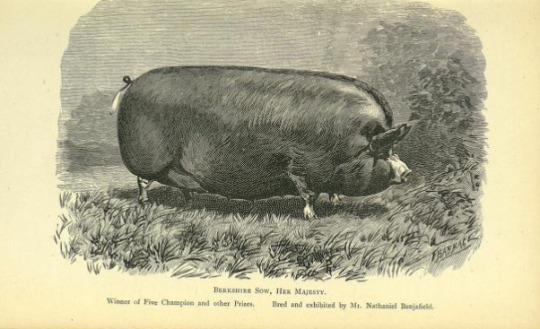
Sinclair, 1879
Sinclair, 1879
Sinclair, 1879
Sinclair, 1879
The breed has formally existed from around 1780 and before this time, the animals were known to exist and have been bred in this region in England. The colour and markings of the Berkshire show close association with the wild boar.
The unimproved Berkshire, c 1840
A breeders association targeted a longer, straight back animal as opposed to the more arched backs of the original Berkshires. There is a great description by a man called Laurance who, in 1790 gave the following account of the old Berkshire pigs. “It was long and crooked snouted, the muzzle turning upwards; the ears large, heavy and inclined to be pendulous; the body long and thick, but not deep; the legs short, the bone large, and the size very great.” (Richardson, 1857) This was not the best animal that the farmers wanted to breed by any means, but it was a marked improvement on the old English pigs that were described as “gaunt and rugged.” (Richardson, 1857) Developing the breed through cross-breeding with the Chinese and Siamese pigs resulted in an animal that Lawrence describes in 1790 as “already a great improvement from the old Berkshires“. He describes the 1790 animals as “lighter both in head and ear, shorter and more compactly formed, with less bone, and higher on the leg.” (Richardson, 1857) By 1875, Richards reports that “the breed has been since still further improved by judicious crossing; it still has long ears inclining forward, but erect, is deep in the body, with short legs, small bone, arrives early at maturity, and fattens easily and with remarkable rapidity.”
One of the men responsible for great developments of the breed in the mid-1800s was Richard Astley, Esq. of Oldstone Hall. Another important breeder of this time was an Irishmen, Mr. Sherrard. In crossing with the Berkshire, he used the Neapolitan pig or the improved Essex pig which is the same as the Neapolitan. This cross resulted in “a long body, a handsome head, a well-skinned animal which is a rapid grower”.
The Siamese and Chinese cross were important for the breed. The Chinese hog went by many different names. The Siam and the Chinese proper were two important variants of the Chinese hog in the 1700s and 1800s. The main difference between the two relates to colour. The Siamese is black and the Chinese, white. There were, however, great varieties, and one could get black Chinese and white Siamese hogs. Importantly, Chinese hogs are small. “The body is a near-perfect cylinder; the back slopes from the head, and is hollow, while the belly, on the other hand, is pendulous, and in a fat specimen almost touches the ground. The bone is small, the legs fine and short.” (Richardson, 1857) Both the Chinese and Siamese are good feeders and matures early. The Chinese are almost identical to the Portuguese and many people thought that the Portuguese breed of the 1800s is actually the Chinese proper.
Trow-Smith (1959) summarises the state of play well when he writes, that “by reason of the introduction of direct and indirect Chinese blood into British breeds very few of the swines of the late eighteenth century had any degree of stability in character. Those which were contemporarily notable have now ceased to exist or become of little importance, and the leading breeds of today were then barely distinguishable. . . The ubiquitous Berkshire, the first British breed of pig to achieve national fame, to win a national distribution, and to exercise a national influence. At the end of the eighteenth century, it was predominantly of a sandy red-spotted type, prick-eared, with no very marked dish of face, and renowned for its early maturity. In the following three decades the Berkshire seems to have been given its present appearance of a black pig with white extremities and dished face by the work of Lord Barrington, who probably had used Neapolitan blood in the improvement – or, at any rate, the alteration – of this breed. The sandy reddish colour still emerges occasionally in crosses from the modern Berkshire.” (Trow-Smith, 1959)
“After Barrington had to a large degree fixed the new mainly black type, the older red Berkshire continued to be found unimproved in the Midlands in considerable numbers and began to assume a Midland name and to be known as the Tamworth.” If one wants to know what the Berkshire looked like at the beginning of the early 19th century, look at the Tamworth of the 1950s. (Trow-Smith, 1959)
Tamworth
Sinclair, 1879
One of the oldest of the English pigs. Extensively bred in Leicestershire, Staffordshire, and Northhamptonshire and in some of the adjacent counties. It is native to the midland counties where there are lots of oak tree forests. They were driven into the forests for autumn and early winter. When the forests were closed off and converted to arable land, farmers opted for a quieter pig variety and one that fattens more readily. (Sinclair, 1879)
The change was accomplished by crossing long-snouted, prick-eared sandy and gry with black spots pigs with pigs having a strong infusion of Neapolitan blood. Many also used the white pig. Bakewell did, through inbreeding and selection, accomplished in both breeds a more delicate disposition and an animal that is more easily fattened. He termed the white Berkshire breed. (Sinclair, 1879)
The result of the mixture was a plum-pudding or the black, white and sandy pig. In certain districts of Staffordshire and adjoining counties, the breeders of these mahogany coloured pigs took considerable pain by selection to increase the feeding properties of their pigs without losing their distinctive colour. (Sinclair, 1879)
The pigs were not particularly quick feeders but they were prolific and when well fattened, furnished a splendid carcass of pork nicely intermixed with lean. (Sinclair, 1879)
They were later crossed with pigs that render them more suitable for bacon production.
Sinclair, 1879
Sinclair, 1879
English Purebreeds
The following pure breeds were acknowledged in England at this time.
Berkshire
Tamworth
Small Black
Yorkshire – divided into Large, Middle, Small White
(Sinclair, 1879)
Development of the New Engish Breeds
In Loudon’s Encyclopedia of Agriculture are a set of engravings that gives us a glimpse of what the transition would have been like. The first edition appeared in 1825.
Harris, 1870
Compare it with the following English Breeds.
Harris, 1870
Harris, 1870
Harris, 1870
Loudon refers to the Berkshire as a “small breed” which was probably the first character quality to achieve better fattening and maturing quality (i.e., reducing the size of the animal improves its ability to gain weight and mature).
Harris, 1870
The sow above shows the effect of crossing the Berkshire with a Chinese pig and better feeding. The effects of persistent improvements on these crossed animals can be seen from the two pictures below, figure 20 and 21 from Harris.
Harris, 1870
Harris, 1870
Compare these with the picture of the old English pigs given right at the top of the letter. Also compare it with this drawing of a Chinese Sow, given by Harris.
Harris, 1870
Boars of the improved Berkshire-Chinese cross, after the breed has been established were used to cross with the large old Berkshire sows. This was considered a less violent cross and was more beneficial than the direct use of pure Chinese pigs.
I wondered how one would approach it if you desire to create a certain look or particular qualities in a pig. Which one would have the biggest influence on what? The boar or the sow? the ever-informative Michael had the answer.
Selection of a Boar – a few pointers
The boar exercise the greatest influence on the “external points of the joint produce”, then does the sow. In the question I asked above, one will then select the boar by looking at its outer characteristics in the first place. What is the outward “look” that you desire in your animal? The sow is said to influences the internal portions to a far greater degree.
Other good pointers to look for in a boar is its sexual organs. These must be well developed is an indication of vigour. The quality that you do not want in a boar is a vicious and bad temperament. Also, select a boar that was part of a large litter. A large boar should not be preferred to a small one as large boars seldom last long. (Sinclair, 18970)
Selecting a Sow – a few pointers
A few comments about a sow to give us an inkling of the different functions of a boar and sow in creating a particular pig. The sow is responsible to furnish her offspring with the internal arrangements to enable the complete animal to readily convert its food so that the pig grows rapidly, fattens quickly and proves itself a profitable hog.
Some breeds produce what is sometimes called a big roomy sow. They are “flat-sided; their loins are “weak”. They are often admired by people who know nothing about breeding pigs. These poor animals have difficulty getting up once they lie down. An evenly-made compact sow with quarters long, wide and deep, and on short legs will rear far more pigs and at much less cost than will one of the large kind.
The important points to look for in an ideal sow, are the same as what is required in a boar. Particularly, its temperament must be gentle. A well-formed udder is of the greatest importance and she should have no fewer than 12 teats. 15 is better! They should be spaced evenly.
Possible Supply Points for the English Navy: The Kolbroek and the Kune Kune Question
As for my own exposure to pig breeding, it is confined to the Kolbroek and later, the Kune Kune from New Zealand. I discussed the tradition about the origin of the breed in the Cape Colony with Michael who had had very interesting insights. Large scale pig breeding or rearing has been associated with the dairy industry for many years. There is a report from 1830 which states that keeping pigs “especially valuable to those persons whose other occupations furnish a plentiful supply of food at a trifling expense; as the keepers of dairies, brewers, millers, etc., the very refuse of whose customary produce will serve to keep a considerable number of these useful animals.” (White, 1977)
One of the places where pig industries developed for exactly the reasons as mentioned, is Wiltshire. Daniel Defoe commented in his work, Tour Through the Whole Island of Great Britain (1720) on the huge volumes of bacon sent from Wiltshire to London. He wrote, “this bacon is raised in such quantities here, by reason of the great dairies..the hogs being fed with the vast quantity of whey, and skim’d milk, which so many farmers have to spare, and which must, otherwise, be thrown away.” (Defu, 1720)
I expressed interest in the state of pig farming from Kent, since, as I suppose, the pigs that made it onto the Colebrook at the end of the 1700s and swam ashore at Koge Bay at Cape Hangklip in the Cape Colony, came from Kent, there should be evidence of large pig farming in this county or did the pigs come from London. Michael referred me to one author he managed to locate which possibly spoke to the issue, Pehr Kalm. Pehr, also known as Peter Kalm, was a botanist, naturalist, and agricultural economist and an explorer. He wrote in 1748 that “in Kent the farmers generally have no more pigs than they require for their own use, so that they seldom come to sell any of them; but in and near London, the Distillers keep a great many, often from 200 to 600 head, which they feed with the lees, and any thing that is over from the distillery; and after these animals have become fat enough, they are sold to the butcher at a great profit.” (Kitchen, 1940)
This being said, Henry Mayhew reports in his “The Morning Chronicle Survey of Labour and the Poor: The Metropolitan Districts, Volume 6”, (1981), with writing from 1849 and 1850, “A great many sheep and other cattle are slaughtered at outside places (outside London and the Smithfield market), such as Gravesend. They are bought at the farmers in the neighborhood, or selected from droves on their way to London.” He later includes pigs in his calculations. This statement shows that livestock was bought from local farmers as opposed to receiving them from London. It mitigates the theory that the pigs from Gravesend were bought from local farms as opposed to being driven from London.
A second fact lends tremendous credence to this theory. The many woodlands and forests in Kent would have been ideal for pig farming. There are reports from early 1800 that there were plenty of pigs in the Weald, located just a short distance from Gravesend. (remarks about Goudway) (Aslet, 2010) (2) It, therefore, seems plausible that the pigs for the Navy and the English East Indian Company was produced from Kent and not from London. This will, therefore, include the pigs brought to South Africa on the Colebrook as well as the pigs that Captain Cook took with him to New Zealand on his first voyage. Both voyages started by taking livestock onboard at Gravesend in Kent.
The clearest statement about pork production in Kent comes to us from Marshall (1798) who writes about the state of affairs regarding pork production in Maidstone, Kent, which is 25miles from Gravesend. This is the time of Cook’s first voyage (30 years later) and the sailing of the Colebrook. Here, he observed a. various breeds; b. a few of the long white native breed of England. c. The Berkshire and a variety of the Berkshire called the ” Tun back,” common in Surrey, d. Chinese which he describes as “prevalent” and e. mixtures of the various sorts, also described as prevalent.
The evidence suggests that there were after all, not only pigs for private consumption in Kent which, one must remember, is a massive county. The writing was done at a time when statistics and information on matters such as the pig population were not available and each writer’s impressions were limited to small geographical locations in Kent and could not possibly have been absolute, verified factual statements. Secondly, once one accepts the premise that there could have been, as some authors seem to imply, large herds of pigs in Kent from which live animals were supplied to the Navy and English East Indian Company. Barrel pork, we know, would have been bought from London, firms like C & T Harris or imported from one of the colonies or Ireland. We found no evidence of large curing and “pork salting” industry in Kent, at this time.
There is another important possibility that comes up. We have a statement that farmers in Kent had only enough pigs for their own consumption. We know that there were a lot of pigs in the woodlands and have a description from marshall on the kind of pigs found in Kent and in Maidstone in particular which is very close to Gravesend. What theory would adequately take all these factors into account in a way that is honest and flows from the facts? I propose that Marshall gives us a clear statement that very close to Gravesend, all the genetic ingredients were present for the creation of the cross that would become the Kolbroek and the Kune Kune. We know that large landowners or brewers would have had large pig herds as was the case in Wiltshire. The statements of the large pig population in London and the fact that many labourers in Wiltshire kept pigs does not mean that there were no large pig farmers in Wiltshire. By inference, the same logic will be true in Kent. It is a possibility that pigs were not procured from small farmers but from a farmer or a landlord or a business that had a large herd of pigs and the genetic material available in Kent would have been reflected in such a herd. That this source supplied the live pigs to Gravesend and that this practice was maintained from the 1760s all the way through to the end of the 1700s. A single source for the Kune Kune and the Kolbroek, located close to Gravesend is a real possibility and will explain the similarities between these two breeds perfectly!

Courtesy of Bridge, J. W.. Maidstone Geneva, an Old Maidstone Industry.
The question is now if there is a president for such large pig farmers around Gravesend. As it turns out, there is an example of such a large operation that emerges from the village of Maidstone that was associated with hop production. According to a report from the late 1720s, submitted to the Treasury Board, one-third of the English hop acreage was situated in Kent. In the 1780s, George Bishop started production of his distillery business. He too learned the art from another country. He had a similar operation in Holland from where he learned the art of distilling Schiedam genever (Dutch Gin). Genever has been distilled in the city of Schiedam for hundreds of years and is world-renowned to this day. Hasted reports that the operation was of such a scale that it accommodated seven hundred pigs, fed on the waste products. (Armstrong, 1995) This is exactly the size operation that one would expect to supply the navy and English East Indian Company with live pigs on a regular basis.
There is one more clue that can narrow our options down. Samuel Lewes (1831) wrote in his A Topographical Dictionary of England that “the Hogs of East Kent are of various sorts, the smaller of which are those that have been intermingled with the Chinese breed : many pigs are reared in this district, and having been fed on the corn stubbles for the butchers, are killed in the autumn for roasting pork. In the western part of the county are some of the large Berkshire breed. Many hogs are fed on acorns in the woods of the Weald, and fattened on corn in the winter.” Maidstone is in East Kent which means that it falls in the category of “Hogs of various sorts, the smaller of which are those that have been intermingled with the Chinese breed.” Of course, we know that this is not an absolute distinction and that George Bishop could have raised Berkshires, but the general description by Lewes fits the Kolbroek and Kune Kune profile nicely.
The Village Pig
Despite the fact that there were clearly large pig farmers in Kent in the 1700s and 1800s, it is still noteworthy that the village pig was commonplace in England during these centuries. The pigs that were predominantly present in England, as was the case in Kent, was the village pig. The English lagged behind in large scale, industrial pig farming until early in the 1900s. Wage-dependence grew but before this time, the economy of self-sufficiency prevailed with rural households provided for most of their own needs. The pig was central to this state of affairs. William Marshall wrote in the 1790s “during the spring and summer months, every laborer, who has industry, frugality, and convenience sufficient, to keep a pig, is seen carrying home, in the evening, as he returns from his labor, a bundle of ‘Hog Weed’; – namely, the heracleum sphondylium, or crow parsnep; which is here well known to be a nutritive food of swine. Children, too, are sent out, to collect it, in by roads, and on hedge banks.” (Marshall, 1798)
The keeping of at least one or two pigs per household was commonplace in the 1700s and 1800s England. One thousand three hundred rural households were surveyed in 1837 to 1838 in Hertfordshire, Essex, and Norfolk and it was discovered that around 38% kept at least one pig. (Boys, 1805) For the most part, the cottagers did not breed their own pigs but bought the piglets and raised them. It is difficult to know exactly how many village pigs were in England at this time but estimates set the numbers at between half a million and a million cottage pigs in late Victorian England. (Salisbury, 1822)
How to feed these animals was another question. George Stuart wrote in the mid-1800s that “most people kept pigs, and made a practice of opening the pig-sties every morning and letting the occupants out into the village street for the day. There can hardly have been any pretty front gardens. Pigs browsed on the grass that ew by the open drain.” (Kightly, 1984)
Most of the feed, however, came from the owner. One cottager from Hertfordshire describes it as follows. “The water in which food had been cooked, and also that in which plates and dishes had been washed, formed a very valuable asset for the pig keeper, and was accordingly put in a wooden vessel called ‘the pig tub’… Those cottagers that kept a pig or pigs had their own tub near the back door; others put their wash (so termed) into a common pig tub provided by a neighbouring pig keeper, who each night came around with yoke and pails to collect same. At the killing, a portion of the liver or some part of the offal was given by the keeper to each of the cottage women who had contributed to the wash tub, as a recompense for the same.” (Grey, 1935) I mention this because it speaks to how the animals were being kept, a practice that would have been brought to the Cape of Good Hope by the English settlers.
Feed was supplemented by various other food sources such as potatoes and even hop that was planted specifically for the pigs. There are many delightful accounts of the importance of the cottage pig to the social structure of England in the 1700s and 1800s. Visitors would inquire as to the health of the family pig in the same way they would about the health of the kids. Parents who wrote letters to kids would include comments on the welfare of the pigs in every letter. It is fair to say that the pig took on a role in English life that became closet to that of a pet than a farm animal. After church, visitors would invariably stop and spend some time at the pigsty where they would scratch the animals back and talk to them before they would enter the house and greet the occupants. All this to say that the pig played a role in England far more important than simply a source of bacon and lard. A distinction started to emerge in my mind between commercial operations in pig husbandry and bacon production and small scale cottage pig raising and the production of home-cured hams, bacon, and sausages. The two disciplines are in reality far removed even though the same animal is the subject and the similar spices and salts are used in curing. This distinction would stay with me. As far as my work is concerned, it focuses on large commercial operations and not on a small scale operation.
Finally
Minette loved the discussion. By the time Michael was done, we had four dining room tables around us with photos and bits of scrap paper scattered across the phots and on two more tables where I laid out my notes. I suggested that Minette and Mike make their way to the bar area so long and get drinks while I sit for a few minutes to gather my thoughts and complete my notes.
I thought that by now I learned a lot about bacon, but the discussion this morning taught me that I have only begun. The interconnectedness of it all stunned me. The pig is one of the easiest and most profitable ways to convert corn and maize into animal protein. The link between this fact and the need to feed an ever-increasing world population stunned me. Not only is the preservation of the meat of supreme importance, but the art of manipulating what nature has given us is the real start of the journey to the best bacon on earth!
I recalled a discussion with John Harris and how they breed bacon pigs with long loins and little fat for bacon as opposed to short, far pigs which they call lard-pigs for the production of hams and lard. The Kolbroek bigs that Oupa Eben farmed back in South Africa are clearly lard pigs and the Berkshire and the whites and blacks are being bred as bacon pigs. It all fascinated me tremendously.
It made me realise that life must be lived like that – with ample interconnections we can engineer in our lives to create a grand tapestry! We can indeed fall in love with life and when our work and our passion are the same – it is the condiments to a complete life that is lived well in every area. My Minette, bacon, the mountains, the different lands and customs and peoples of this bountiful earth all unite in my heart and soul it becomes the gift from an amazing universe we exist in. I smiled when I walked over to the bar area and thought to myself that bacon is truly connected to the art of living!
Lots of love from Liverpool!
Your Dad and Minette
Further Reading
Also refer Chapter 10.02: C & T Harris in New Zealand and other amazing tales where I take up the similarities between the Kolbroek and the Kune Kune.
Chapter 03: Kolbroek where the story of the link with the pigs from Gravesend (Kent) is first proposed.
In Search of the Origins of the Kolbroek
Kolbroek – Chinese, New Zealand, and English Connections
The Old and the New Pig Breeds
(c) eben van tonder
“Bacon & the art of living” in bookform
Stay in touch
Like our Facebook page and see the next post. Like, share, comment, contribute!
Bacon and the art of living

Promote your Page too
Notes
(1) Oscar and I arrived at the Royal Waterloo Hotel on 18 March 2012. Colin Turner from Dantech made the booking.
(2) There is a popular hiking trail called the Wealdway which is from the Southern Coast to Gravesend, crossing the Weald.

References
Armstrong, A (Ed.). 1995. The Economy of Kent, 1640-1914. Boydell Press.
Aslet, C.. 2010. Villages of Britain: The Five Hundred Villages that Made the Countryside. Bloomsbury.
Boys, J.. 1805. General View of the Agriculture of the County of Kent. 2nd edition.
DANIEL DEFOE Ultimate Collection: 50+ Adventure Classics, Pirate Tales & Historical Novels – Including Biographies, Historical Works, Travel Sketches, Poems & Essays (Illustrated), Robinson Crusoe, The History of the Pirates, Captain Singleton, Memoirs of a Cavalier, A Journal of the Plague Year, Moll Flanders, Roxana, The History of the Devil, The King of Pirates and many more. From Letter IV Containing a Description of the North Shore of the Counties of Cornwall, and Devon, and Some Parts of Somersetshire, Wiltshire, Dorsetshire, Gloucestershire, Buckinghamshire and Berkshire. 1761. Also refer, A Tour Thro’ the Whole Island of Great Britain: Divided Into Circuits Or Journies. Containing, I. A Description of the Principal Cities By a Gentleman. December 31, 1760
Grey, E.. 1935. Cottage Life in a Hertfordshire Village.
Harris, J.. c 1870. Harris on the pig. Breeding, rearing, management, and improvement. New York, Orange Judd, and company
Kightly, C.. 1984. Country Voices: Life and Lore in Farm and Village.
Kitchen, F.. 1940. Brother to the Ox: The Autobiography of a Farm Labourer.
Lewis, S.. 1831. A Topographical Dictionary of England. S. Lewis & Co.
Marshall, W.. 1798. The Rural Economy of the Southern Countries (2 vol)
Mayhew, M.. 1981. The Morning Chronicle Survey of Labour and the Poor, The Metropolitan Districts Volume 3. In the years 1849 and 1850, Henry Mayhew was the metropolitan correspondent of the Morning Chronicle in its national survey of labour and the poor. Only about a third of his Morning Chronicle material was included in his later and better known, publication, London Labour and the London Poor. First published in 1981, this series of six volumes constitutes Henry Mayhew’s complete Morning Chronicle survey, in the sequence in which it was originally written in 1849 and 1850.
Salisbury, W.. 1822. The Cottager’s Agricultural Companion.
Sinclair, J. (ed). 1897. Pigs Breeds and Management. Vinton and Co, London
Tunick MH (2008). “Whey Protein Production and Utilization.” (abstract). In Onwulata CI, Huth PJ (eds.). Whey processing, functionality and health benefits. Ames, Iowa: Blackwell Publishing; IFT Press. pp. 1–13.
White, G.. 1977. The Natural History of Selborne. Penguin. From letters in 1775.
Wilkinson, p. R.. 1933. Thesaurus of Traditional English Metaphors.
A Maori Proverb from Maori lore, 1904, by Izett, James (https://archive.org/deta…/maoriloretraditi00izetuoft/page/n3)
Photos
Old photos from Liverpool
-Liverpool, history, Liverpool-history-l22-waterloo-royal-hotel-c1900
Find this Pin and
-Waterloo Station 1907;
-Waterloo beach scene, circa 1906;
-Picnic on Waterloo seafront on Easter Sunday – undated
– photos from our stay on 18 March 2012
From: https://www.liverpoolecho.co.uk/…/photos-show-waterloo-thro…
Old Hotel photo from pinterest
Other photos, taken by Eben
Pig photos from
Pigs Breeds and Management
Edited by James Sinclair
Vinton and Co, London
1897
Harris on the pig. Breeding, rearing, management, and improvement
by Harris, Joseph
New York, Orange Judd, and company
c 1870
Chapter 09.15 The English Pig with links to the Kolbroek and Kunekune Introduction to Bacon & the Art of Living The quest to understand how great bacon is made takes me around the world and through epic adventures.
0 notes
Text
Well...I caved...
I saw the Emoji Movie.
Now I want to make things perfectly clear here: I did not give Sony any money for this. I found it on Kimcartoon, because I refuse to contribute to something so fucking awful. I knew this movie would be crap. I knew I wouldn’t like it. I have several free movies on my Scene card (a points-based rewards card for Cineplex theatres) but I knew this movie wasn’t even worth that because a) it would still register as someone who went to go see the movie and b) this movie isn’t worth the bus money I would have spent to get to the movie theatre. I want to make it clear that normally I would not torrent movies, and recommend actually going to see them in theatres or renting them or viewing them on a site where their creators actually get something in return. People work hard on movies and credit must be given where it’s due.
Speaking of that, to the animators of the Emoji Movie: you have my condolences. The one thing, and I mean one thing about this movie that I will say is good is the animation. You guys tried, and hey! It’s not half bad. It’s not...great, per se. But you tried. You get a gold star! (And at least you can say you’ve worked on a multi million dollar animated movie for your resumes when you want to apply to a much better movie company.) The animation in the Emoji Movie is... Like I said, it’s good. It’s certainly better than some other more notoriously bad animated movies, and this would be where it being a product of Sony helps it out. But keep in mind that when I talk about the “animation” I’m talking solely about how this thing looks on a visual level. Things like rendering, colour choices, character design... yeah, they’re ok. But other aspects that delve more into the actual storytelling aspect of animation, not so much. World-building wise it is painfully obvious they’re going for a Wreck It Ralph meets Inside Out kind of look. Dialogue and music scores? Yeah, pretty bad. And the moral? Oh boy, here we go.
The actual story of the Emoji Movie is one that you’ve all seen a thousand times. I’d say spoiler alert but it is literally the most cliched story in the book. Does this sound familiar to you? Meet our main character. He’s excited because it’s his first day at his new job. Except, he’s a bit of a weirdo. He doesn’t quite fit in to the status quo so everybody hates him. Sure enough, when he does start his new job after ten minutes of painful filler, the thing that makes him different gets in the way and he screws everything up. His boss makes it clear he’s fired, but then turns into a super villain out of no where because that’s what bosses are like. So now our main character is on the run with this other random loser he said, like, three lines to before everything went to shit. The two losers then enlist the help of a badass female character who purposely rebels against the status quo. They convince the female character to help them out by giving her something in return that will allow her to even further rebel against the status quo and our trio of protagonists set out on their quest. Along the way they get into some wacky hijinks that bring them all closer together. The main protagonist slowly falls in love with the female character. The idiot sidekick has exactly one moment of brilliance that somehow saves the day, but it’s not enough to excuse the number of other times he nearly fucked everything up. And the female character, with the “help” of the main protagonist, slowly breaks out of her cold exterior to reveal she’s only like that because she’s afraid of people getting to know the real her, who really is a soft and caring person but is afraid of conforming to the strict gender stereotypes thrust upon her because she’s a girl. They finally get to the end of their quest, but then a tragic misunderstanding due to the complicated love-related feelings our male and female protagonists have causes them to split up. Meanwhile, through some vaguely explained and half-assed reasoning, the whole world is about to be destroyed. And it turns out that it’s our two potential love interests who are the only ones who can stop it. And so our main character learns his lesson that it’s better to be yourself, no matter what other people think of you, because being yourself can save the world. Our female lead leans that it’s not about what you want, but more what your boyfriend wants to make him happy. And our loveable idiot sidekick learns nothing and continues to be a loud, self-absorbed moron. And then a dance number happens, because fuck any questions you might have about the plot: look at how much fun our characters are having!
If you think this sounds familiar, you’re right. This plot has been done to death by many a children’s show/movie before the Emoji Movie. But at least those shows/movies knew what they were doing. The Emoji Movie is just a bland, poorly written movie that was likely strung together by a series of board room members and focus groups, not actual writers. In some scenes you can practically hear the discussion amongst the middle-aged executives about what the kids think is cool and also which app developers have given them money and how they can shoehorn in a reference to them.
It’s made even more frustrating because, and I can’t believe I’m saying this, some of these ideas could have actually worked. It’s kinda like Wreck It Ralph, and how each video game opened up a whole new world with different colour schemes, styles, characters, you name it. It made the universe of that movie seem really big, despite everything actually only taking place in one arcade. But in the Emoji Movie...it all seems really compressed. Each app is represented as a giant box on the “Wallpaper”, which is essentially the main area of the phone. It’s where our characters can go to access other apps. But when they do go into another app, it still feels like everything’s trapped inside a box. It’s like there are these invisible walls that keep the world from getting any bigger (and in some cases that is literally what happens) and as a result it just seems really limiting. They could have done some really interesting things with certain apps, or you know, things that are actually funny. They could have had a car chase in a racing game, or maybe entered a platformer game like Doodle Jump where the art style is entirely different. Instead, we got a series of ads for a number of different apps in premises that were neither funny nor exciting, and all it did was that it left me wondering why a teenage boy had an app for Just Dance on his phone in the first place. I’m not saying that a movie devoted solely to telling a story about emojis would be Pixar worthy or anything but it could have been at least a little more creative.
I’m not too mad about all of this though because I knew the second this movie was announced that it would be a pandering mess. I knew it’d be a huge pile of steaming bullshit, and speaking of that here’s one thing I didn’t expect: the voice actors. Patrick Stewart, Sir Patrick Stewart, plays a literal piece of shit. You’ve also got T.J. Miller as our main character, Gene (the “Meh” emoji), James Corden as the loveable idiot- I mean, sidekick, Anna Faris as the female love interest, and many others including Maya Rudolph, Steven Wright, Jennifer Coolidge, Christina Aguilera, Sofía Vergara, Rachael Ray, Sean Hayes, and Jake T. Austin. And the sad thing is: you can pretty much hear in most of these characters’ lines that these actors did this for the paycheque and not much else. The line delivery is really flat most of the time, but I don’t blame the actors too much for that because I bet they read the lines and realized that they weren’t worth their best delivery. Yeah, the lines were terrible. There wasn’t a single time I so much as smiled. I was literally the fucking “meh” emoji. Which, gotta say, that’s pretty awesome if that’s what Sony was going for. But it’s not what they were going for. Normally, even a bad animated movie will have at least one moment that will make me go “Hey, that’s kinda clever” but this one had nothing. It was just painful joke after painful joke, the setups for which could be seen from a mile away and anything that did come out of nowhere came from so far out of left field that they were basically out of breath when they got there.
The thing that angers me most about the Emoji Movie is the story. If you couldn’t tell from my plot summary, I’m pretty bitter about it. I could write a whole separate piece about the “be yourself” moral and my issues with it, but I’ll keep it short here. It is the kind of moral that can either be done right, like how it was handled in Wreck It Ralph, or it can be done wrong, like it was here. The thing about this type of moral is that it rarely works 100% in real life, and as a result it works best when it’s not presented as such. Instead of being yourself becoming some kind of deus ex machina that magically saves the whole world and as a result suddenly changes everything for the better, it’s a much better kind of moral when you come to accept who you are, that you are different, and that’s ok. Things might not exactly change the way you want, but you yourself are a better person, and that then often affects other things like how other people react to you. Think about how Wreck It Ralph ended: it didn’t end with the apartment dwellers in Fix It Felix Jr. deciding that he no longer was the bad guy and he no longer needed to play that role - Ralph still had to play that role, despite him coming home a hero. What changed was how they treated him, that they accepted him as he accepted himself. And in turn, they started treating him with the same respect they give to Felix and each other.
In the Emoji Movie, being yourself does everything. It saves the world. It gets you the girl. It brings parents on the verge of divorce back together. The only thing it doesn’t do is give the villain any closure (seriously, she just kinda...disappears). I take issue with this because of how the climax of this movie is set up. Gene, the Meh emoji, rather quickly falls head over heals with the female main character, Jailbreak. Jailbreak states several times throughout the movie that her intention is to get to the Cloud where she is free to be who she is. Gene initially starts out helping her get to the Cloud so she can get the source code to the phone and reprogram him so he is a true “meh” emoji, since he deems himself “a malfunction” because he can make multiple expressions. (I’m aware of the long-windedness of that statement. The explanation is like that in the movie, too). However, before this can happen, Gene confesses his feelings to Jailbreak while he still can and she doesn’t quite feel the same way. It’s obvious that there’s some connection there, but I think it was one of those things where the girl just wants a friendship while the guy wants a relationship. After that rejection, without much of an argument or anything, Gene becomes a Meh emoji without the use of the source code. Just like that. We have a character who was shit on by everybody, even his parents, was told he was a malfunction and needed to die to do any good in the world, and had to flee the only home he ever knew and live on the run with killer robots sent by his own people chasing him and it was the rejection of a girl he knew for maybe thirty minutes that changed his entire personality. He then leaves for home. Jailbreak, just as she’s about to achieve her own goals, is told what happened to Gene by comic relief character Hi-Five and promptly abandons everything she had been working on for years to go back and fix Gene. That’s right. Gene wins in the end because Jailbreak returns to tell him that she also cares for him. She doesn’t get anything back in return. Her goals have been cast into the wind. She’s now been thrown back into a life she left because she met a guy and fell in love. The male lead gets the moral that everything in life will work out if you be yourself. The female lead gets the moral that life will be wonderful and happy if you have a parter (preferably a romantic male partner) to share it with.
And that’s my problem with this movie. It’s like the Lego Movie without the irony. We’re following yet another male lead protagonist who gets everything he ever wanted by the end of the movie, becomes the damn hero of his world, and never has to change a single thing about himself. It’s everyone else who has to change, who has to move out of the way for his “development”. The female character obviously has to change the most, going from her own individualistic style to back into a somewhat conforming token girlfriend who is always happy because she found Love™. His “best friend” sidekick can continue to be lovable and stupid and slightly self absorbed, just not quite as self absorbed now because he has a best friend! Yay! And for everyone else...not much really changes. Which makes this movie worse than some of the other cliched movies out there.
Normally what happens at the end of a Be Yourself movie is you have all the characters at the end doing just that: being themselves and not who they were when they were conforming to society’s rules at the beginning of the film. SPOILERS for anybody who still cares at this point, the way Gene saves the day is by creating an emoji gif of himself making various faces to express his teenage phone owner’s feelings about a girl the kid has a crush on. This somehow works just before the entire world is deleted and somehow the kid unplugs the phone and brings everything back without a single hint of major data loss, which is honestly the most unrealistic thing about this movie. (Added to the fact that the kid wanted to do a hard reset of the phone but had to go into a phone store to have that happen, telling me that the writers clearly don’t understand how smartphones work if that’s the case.) But, moving on: the final scene shows Gene and all the other emojis happily working at their job, dancing to a pop song and generally having a good time. The movie ends with Gene producing another gif emoji reaction and the credits start to role. What would have been interesting would be seeing some of the other emojis are now able to make different expressions as well. Like maybe Hi-Five can perform a number of different hand gestures (which would actually be pretty hilarious considering one hand gesture in particular). Or the frowny emoji can smile, or stick their tongue out. Anything, really. But nope! It’s just Gene who can change his expression. Everyone else is still a boring old, one expression emoji. I guess you can argue that they are still being themselves, but then what’s the fucking point of the movie? The Be Yourself moral generally is meant to say that you don’t have to be what society tells you to be, but then in terms of this movie, it gets a little messed up. Is it society telling these emojis what to be, or the code of the phone itself? What if the happy emoji really isn’t happy, but is unable to express it because of a god-like limitation enforced on all of them? There were even jokes about this at the beginning, like the sad emoji can never be happy even if he wins the lottery. And if the source code can be used to “fix” Gene, can it not be used in reverse to allow these other emoji’s to have different expressions? And, also, at one point toward the end of the film the villain states that emojis are meant to only have one emotion, so does that mean the film is agreeing with a villain’s statement by confirming that yes, all emojis except for that one weird one can only have one expression. Typically you use the conclusion to contradict a big statement by the movie’s villain, but I guess that’d be too much work to write/animate.
I’m probably looking too much into a movie I hate, but they even bring this up in the movie. Gene’s father, the original Meh emoji, is able to cry. The only slightly decent scene in the movie, might I add, has him and his wife meeting up in an instagram pic of Paris after having a fight. In it they have a touching heart to heart about their son whom they’re worried for, and the father reveals that Gene’s the way he is because the father can also produce multiple expressions. Now, that’s a great explanation of how Gene works and all, but why? Would it not have made more sense to say that every emoji is able to do this, and most of them are just much better at keeping things in one emotion/expression? To have it so that they literally can only make one expression seems almost cruel, and it takes away from the moral of being yourself when 99% of the population can’t physically be themselves fully. It only makes the decision to eradicate Gene more sensible, as he really is the only thing wrong in the phone, and because of him and his actions, he almost wiped out literally everything on the phone. He got insanely lucky at the end of the movie, and it’s still not great because how long is he going to be able to speak for his phone user before he misjudges the situation and things take a turn again? I gotta say, if I got the final text of the movie sent to me I’d be annoyed (which was just Gene making a series of faces set to music, but you have to remember that neither Alex the phone user nor the person he sent it to would be hearing said music, so it’d just be an emoji bouncing and changing faces for far too long and for no reason).
Ok, I’m going to wrap this up. This was a bad movie. It was nothing but ads for various apps with a half-assed story about accepting who you are or some shit thrown in. If you’re curious, like I said: Kimcartoon. Don’t give Sony any money for this shit. The more money they get, the more they’ll think it’s ok to keep making movies like this. Thank you for reading, and if we’re lucky we’ll all die in a fiery explosion before the Meme Movie gets released.
#it's such a stupid movie oh my god#and the thing is if the writing was half decent it might not be that bad#i guess why i care more than normal is that this was an original movie#in a sea of sequels prequels or remakes this movie stands apart because it's an original idea#and THIS is why hollywood never does original ideas#they still want something that's safe and predictable even if it's new#so the story is always the same#the characters are always the same#EVERYTHING IS THE DAMN SAME AS EVERYTHING THAT CAME BEFORE#and when you only think about what focus groups want to watch you're only going to make bland and forgettable movies#this movie could have been something cool#it could have defied what everyone has said about it from the beginning#it could have actually had some kind of meaning to it#but instead we got the same stupid crap that we always see from second-rate animation companies#there's no heart to it#it was only made to make money#and we've past a point now where animation is above that as a film medium#the emoji movie#fuck this movie
4 notes
·
View notes
Text
Spring Anime 2017 Part 1: woke up late
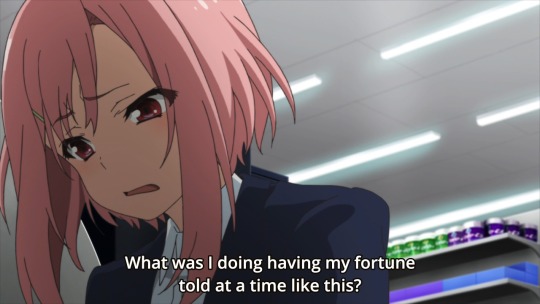
This time I prepared so I could get to the procrastinating right with the first post! Yay! Let’s get this show on the road.
See also:
• spring anime 2017 part 2: girlfriendship is magic
• spring anime 2017 part 3: comfy and easy to wear
• spring anime 2017 bonus round: things you already knew were good
Alice to Zouroku
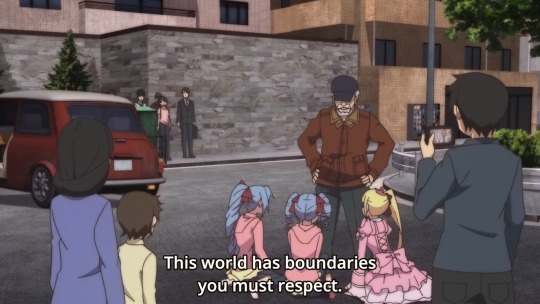
So get this, a pretty girl with psychic superweapon powers escapes from a lab she’s been in her whole life and now has to adapt to the real world with the help of a guy she stumbles upon, all while being chased by her superweapon former friends. But in a shocking twist, this is actually better than Elfen Lied! Not being written by someone as brutally incompetent as Lynn Okamoto is a start, but the real change here is that our heroine is less murder machine and more genuinely cute, and more importantly the guy she ends up with is not a harem ringleader dorklord, but a grumpy elderly florist. Yeah, we’re skipping the recent trend of dadfeel anime and diving headfirst into granddad feels (I don’t know if aging otaku are quite old enough to fully self-insert yet, but the same principle applies). It’s a low hanging fruit, but that’s what makes it work; a deliberate, contemplative pace and delightfully whimsical music by TO-MAS also help. So far, so good, were it not for the fact that this is only one aspect of the show. Of course a show like this would have an action half as well, and that one’s pretty garbage. Not only is it directed with zero impact or excitement, it also relies on horrible CG a lot - I really don’t want to be reminded of Hand Shakers this quickly again, thank you very much. Plus, it runs with a Alice in Wonderland metaphor, which is baby’s first literary reference and doesn’t bode well about the intellectual ambitions of the project. So we have one half that’s admittedly effective, but also very predictable and which desperately needs to go somewhere to pay off. The other half just plain sucks and has little chance to improve. I think I’ll give this one a few more chances to sort out its priorities, but it’s definitely not a sure thing.
Busou Shoujo Machiavellianism

A cocky guy walks into a school full of pretty girls with weapons who have managed to sissify all the dudes by forcing them to crossdress. He then proceeds to troll them with his rugged charm. You know, it’s really not that easy to offend me but damn this show is trying. Apart from bottom-tier harem crap setup, this show also looks like ass and is tremendously boring; a few well done action cuts do not in fact excuse “fights” that mostly consist of exposition about special attacks, or terminally uninspired direction. Macchiavellism is the worst of shounen fightmens crossed with the worst of harem LNs, plus some of the worst jokes bad anime comedy can come up with. It’s not even audacious enough in its badness to boggle the mind; I could watch this if I was interested in adding another 1/10 to my MAL, but that’s about all I can appreciate about it.
Frame Arms Girl

Speaking of unholy combinations, here’s Gundam Build Fighters x Rozen Maiden x Strike Witches: A girl stumbles into a sentient mecha musume model kit that spends its time explaining the technical details of model building to her and attracts other model kits that want to fight. It’s an ad for model kits, what do you expect. There’s no characters, the plot is utterly uninteresting, the action’s bad, it looks subpar to bad, and the only high point is how brazenly it reads to you from the manual.
Gin no Guardian
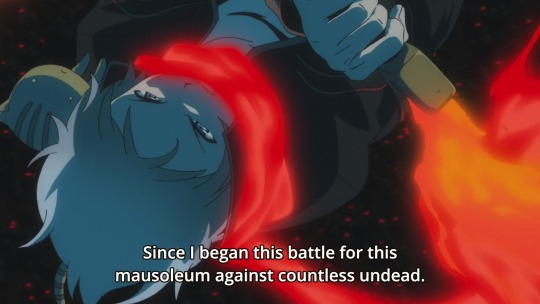
Here’s your latest Chinese webcomic adaptation from your friends at Haoliners Animation League (Shanghai) Inc., whose output has been asymptotically approaching the quality level of a bad Japanese cartoon for years now: Closer than ever, but still not quite there. Maybe they should stop picking bad webcomics with incomprehensible nonsense plots as source material, just sayin’. So this is about a dude who beats up CG zombies in the spirit world but the actual story is how he got there? Or something? It manages to look barely alright and even has some visually striking design work, but its half-length run time prevents it from forming any semblance of coherence and I’m not about to ask for further clarification.
Oushitsu Kyoushi Haine

In a vaguely 18th century Germanic kingdom, a grown ass man with the body of a ten year old and a snarky disposition is hired to become the tutor of an instaharem of fabulous princes. I really don’t get who this is for; obviously the harem is straight out of a PSP otome dating sim, but it’s lacking the obvious self-insert dimwitted main girl, and no, it isn’t gay romance either. Even though it’s a comedy, that aspect does not seem to be played for outright parody. The source material is running in GFantasy, a shounen title (but not one as specifically elementary schooler-focused as Jump, it also carries fujo favorites such as Black Butler). Dubious provenance aside, Haine is moderately funny if nothing else, mainly due to the deadpan reactions of the main character to these ridiculous dreamboats. It just also drags more than a little, with long conversations that aren’t very entertaining all the time. It’s watchable compared to a lot of the stuff out this season, but I remain unconvinced.
Rokudenashi Majutsu Koushi to Akashic Records
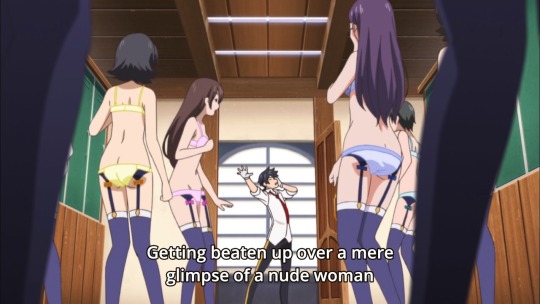
After Macchiavellism already obliterated the battle harem bingo, here’s our next winner. The setup’s more or less the same and in some respects it’s even more formulaic (the school is actually a magic school for magic people, princesses, duels, &c), but Akashic Record is not quite as odious simply by focusing on being a comedy first and foremost and pulling that off at least on a technical level - it has good visual execution and comedic timing. The question is just how much credit you want to give it for that when the jokes themselves still suck, and that’s of course ignoring the entire setup being Light Novel as all fuck. Kinda seems familiar actually, because this is not entirely unlike to what KonoSuba did to the isekai genre, and people keep trying to tell me that that was totally great. Well, go watch this one then, motherfuckers.
Sagrada Reset
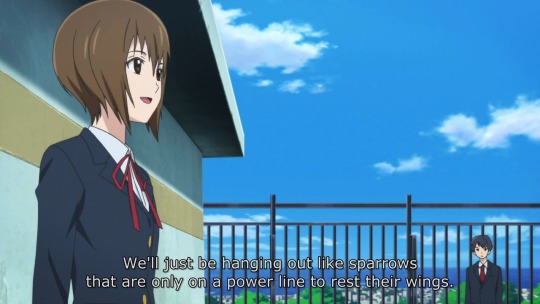
But there’s always the other kind of light novel, the one where high schoolers talk about life, people and the world. Think Bakemonogatari or OreGairu. Sagrada Reset wants a slice of that pie and starts by stealing the magical realism conceit from classic™ visual novel Wind ~A Breath of Heart~: There’s a remote town in Japan where everyone has superpowers, but if they leave the town they instantly forget about it. Oops, i guess I just spoiled Wind’s midgame, but I have to since Sagrada Reset puts this stuff right upfront because it has to discuss technicalities (at length) to make its plot work. Yeah, that’s how I like my magical realism, thoroughly explained and conceived by people who should write wikis, not fiction. There’s a girl who can reset time, but only once per arbitrary period of time and also including herself, which means she only finds out she already did it once it doesn’t work again. So that’s pretty useless, except there’s a guy whose superpower is having his memory unaffected by this. They have to work together to solve... some problems, I suppose. This whole idea seems to have potential in a JoJo subplot sort of way, but it’s completely sunk by the way the thing is written, since apparently the writer has never met a human being in his life. It’s entirely made of these pseudo-deep highschool stoner philosophy conversations presented in a lifeless inflection by people who stand around like robots on battery saver mode. This seems to be intentional (at least the term “robot” is thrown around a couple of times, which is certainly ominous), but it also makes for an excruciating and interminable watching experience.
Sakura Quest

Since Sakura Quest was announced, I have been gleefully throwing water on the hype of people who expected this to be the next Shirobako. After all, how likely is it for lightning to strike twice, especially considering Mizushima is not in the director’s seat? Surely it was all just wishful thinking, I want a S2 of Shirobako as much as everyone but I just don’t trust anime. Well consider me fucking told, since apparently among the parties wishing for more Shirobako is P.A. Works, and unlike the anitwitterati they can make it happen. The actual brand name seems to be reserved for a Mizushima project, but I would have no trouble believing that Sakura Quest is a spinoff about Aoi’s sister in the boonies; Shirobako Sunshine, if you will. The initial setup is mirrored here; Yoshino is not a young professional starting her dream job, but a young professional unable to score a dream job (or any job) so she settles for a random one she’s very skeptical of, but will undoubtedly learn to love. Apart from that, well, it’s Shirobako: The positive tone, the large cast of likeable oddballs, the relatable writing about post-highschool problems, and it even looks completely identical. I’ll still be realistic about it: Shirobako isn’t great for what its ideas were, but for how thoroughly it delivered in the long run, and this is by no means guaranteed to also happen with Sakura Reset Quest. For an episode 1 though, it’s like a dream come true, and P.A. are setting themselves up for seasonal double domination with this and Uchouten Kazoku S2.
Souryo to Majiwaru Shikiyoku no Yoru ni
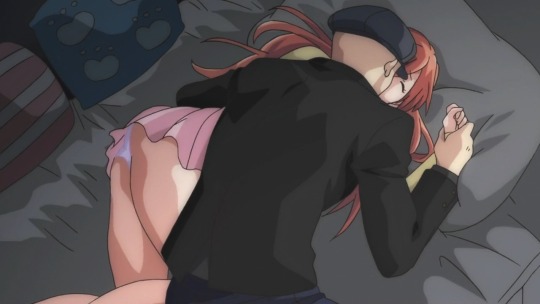
Enough gushing, here’s 5 minutes of porn. Okay, it’s josei porn so there may still be gushing involved if you know what I mean, nyuk nyuk. Er, sorry about that. Sooooo there’s a sexually frustrated woman who meets her school crush who’s now a priest, and then they fuck. With a staff made up mostly of (non-josei, but hey) hentai OVA veterans, there is really only one way this could go. I appreciate the brazenness as usual, but I really don’t know how much steamy harlequin romance tailored to TV broadcast standards I want to watch.
Tsugumomo

I’ve seen some warnings about Tsugumomo based on its source material which is a manga with 1. a very high level of art quality and 2. content that has been described as “makes To-Love Ru Darkness look family friendly”. This may explain why it has not been licensed. It doesn’t explain why this first episode is fairly tame though; sure, it’s very much an ecchi comedy, but you get those from time to time and Tsugumomo is not any more raunchy than what I’m used to seeing (and it accomplishes this even without obvious BD-advert censoring). That incidentally also removes any reason to watch it: The plot is as basic “guy gets magical girlfriend for purposes of fights and/or walking in on her naked in the bath” from 15 years ago as they come, and it’s suspiciously well animated, but not well enough for that to be a selling point. Maybe it will get real skeevy eventually, I won’t be around to find out.
Warau Salesman NEW

Warau Salesman starts strong with ultra cool, Saul Bass-inspired opening credits, but that’s about all it has to offer. It’s based on a “black comedy” manga from the 60s by one of the Doraemon authors, and oh boy can you tell. Not only are the character designs 60s-tastic (so at least the Osomatsu-san fujos can schlick to something while they wait for the S2 of that), but so are the sensibilities: The titular salesman goes around tempting frustrated office workers with doing something moderately irresponsible, such as drinking in your lunch break or spending above your means, and then ruins their life when they actually do it. It’s like Twilight Zone written by your HR department. In the 60s. This stuff would have been outdated even in 1989, when it was animated for the first time – hence the “NEW”. I don’t know, it just seems mean-spirited, obvious and pointless, and most importantly I put the “black comedy” in quotes because in addition to not being very black, it’s not funny in any way, and unlike regular anime comedy I can’t even see what’s supposed to be funny.
#anime#impressions#spring2017#Alice to Zouroku#Busou Shoujo Machiavellianism#Frame Arms Girl#Gin no Guardian#Oushitsu Kyoushi Haine#Rokudenashi Majutsu Koushi to Akashic Records#Sagrada Reset#Sakura Quest#Souryo to Majiwaru Shikiyoku no Yoru ni#Tsugumomo#Warau Salesman NEW
282 notes
·
View notes
Photo
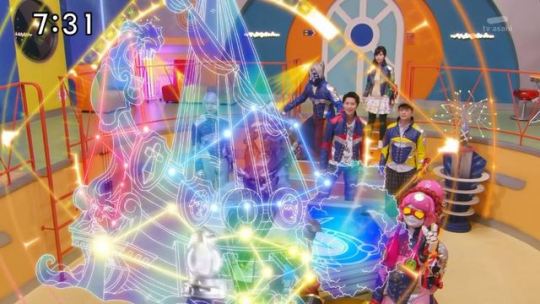








The remaining piece for Legendary Argo is finally here!
Will the Kyurangers succeed in obtaining it? Get the answer on Kyuranger's 19th episode...
- Wow, 2 weeks without Kyuranger feels like ages, eh? Well, not exactly *grins*. Anyways, let's start the episode with... PLUSHIES! Oh TOEI and Bandai, you just have to promote a product every time opportunity knocks, huh? But this time it's rather melancholic, because the bigger scene contains Champ who's still in pieces. Aaaaww... T_T. Painful flashback and all, this is an extended version of the cliffhanger we saw closing episode 18. What is Stinger up to?
- At the same time, a massive armada of Consumarz is approaching Earth. Looks like Don Armage is getting... a little anxious about the planet, and that's because of The Argo. Rather than taking them all down, Commander Xiao thinks it's best for the team to race for the last piece of the Legendary Vessel instead. The #87 Carina Kyu Globe to be precise. One that is located in Planet Keel of the Carina System. Contrary to my complaint, turns out they DO need Pyxis to point out its specific location.
TRIVIA: Carina is the Constellation of... Keel. As in, THE actual English name of a ship's crucial structural element. In this case, of course it's derived after the mythology of Argo Navis. Similar to Vela that was found in Planet Vela of the... Vela System, TOEI isn't even trying to be subtle by placing Carina in Planet Keel of Carina System. LOL.
- Unfortunately, learning that his boss is getting cold-feet, Scorpio is more determined than ever to find the Argo as well. He revives another part of Madako, and tells the new gallant-dramatic personality version to watch over Earth while he's off hunting Kyu Globe in the Carina System. When I saw this episode on-air, I was quite puzzled to see how Madako is STILL alive. I mean, dang it, we all see how the persistent Octopus bit the dust in another universe! But on 2nd viewing, I've realized that there might be a logic to it. It makes good sense that Scorpio keeps a part of her body, for emergency cases, right? Which means, this isn't the remains of that Madako who died last week. What I still don't get is, HOW Scorpio manages to figure out the location of Carina? Did something we should've known occur off-screen as well?
- We get to see Kotarou... on the monitor again. He's reporting that Stinger is missing from the HQ, and that the repair of Champ has probably reached around 60-70%. Unbeknownst to Xiao, Stinger himself shows up at the Orion not long after. To do what? To paralyze Garu and Raptor, and... steal Puppis and Vela Kyu Globe. Whooaaa there.... what's happening?! Is he betraying the team now?
- The away team arriving on Planet Keel isn't faring better as well. While Lucky, Hammy, and Spada deal with rock-hard Malistrate Olmega (who somehow reminds me of "Tomb Raider"), the BN Thieves are attacked and trapped in vines by a mysterious person. Chamaeleon Green uses the #69 Caelum Kyu Globe to... 'fix' Olmega's face, causing the Malistrate to run off abandoning the villagers he enslaved. Village Elder tries to warn the three Kyurangers to avoid the Forest Guardian. But since they are racing against time, no time to hear long and winding fairy tale! LOL.
- Said Forest Guardian who has captured Balance and Naga, is the Princess from... "Legend of Zelda". Wait... seriously? Nah, my bad... she just reminded me of Zelda. Her name is Eris (portrayed by gravure Idol Hinano Ayakawa), and apparently she has been entrusted to guard and protect the Carina Kyu Globe for many years. At least until "saviors in pursuit of the Argo" appears to take it. Eris might be a important character, but identity of the mysterious man requesting her aide might be a FAAAR bigger deal than her. I suspect this guy is going to play a VERY crucial part in future story. In fact, thanks to the tone-of-white costume he's wearing, can't help but wonder if he might somehow be related to... Lucky's past? Also... for some reason, the lower half of his face feels oddly familiar. There's something about it that rings a bell. Like I've seen it before. Could he be... a veteran Tokusatsu actor? Hmmmm...
- Enough about Orion, and let's focus on Eris. Because there's a chance we might not see her again. Eris isn't only tough, because... she comes with a rather fickle personality. Eventhough she's clearly all over 'Ikemen' Spada (while shooting down poor Balance, who actually thinks she's her type), she doesn't trust the away team easily to hand over the Kyu Globe. Not even a very early (yeah, already?!) suitless roll-call is enough to convince her. Which is troublesome, because Scorpio has been spying them all these time, and ends up stealing the Kyu Globe in just one strike. Battle against Scorpio is ON!!!
- The team is divided into two. Scorpio proves how heartless he is, by turning Olmega into his 'Zombie', and commands him to attack the village. Thus while Leo Red singlehandedly deals with Scorpio, the others have to stop Olmega. Much to Eris' dismay, who complaints that the Carina Kyu Globe she had spent all these time to protect, is far more important. Using the Shining Kyu Globe, Leo Red turns into Sun Leo Red and retrieves the item. A short-lived victory, because he has to let it go again in exchange for Eris' safety.
- Dorado Yellow and the others manage to defeat Olmega, using the "Paper, Globe, Scissors" technique (utilizing Cancer and Scutum Kyu Globe). He turns giant, and that obviously calls for mecha fight. It comes with a catch, because Leo Red utilizes the Shining Kyu Globe once again, and this time powers-up both Libra Gold and... Ophiucus Silver. Yes... contrary to another previous complaint of mine, this power-up DOES affect other members too! Which is NICE. Then again, how come Raptor and Hammy weren't affected before? Don't tell me it's for men only (sexist much?). Oh well, the Hyper-Kick seals off Olmega's fate alongside his Consumarz.
- Lucky's rousing speech about saving everyone, has converted Eris into his fans. She apologizes for not believing them, dumps Spada (don't worry Chef, you still have Raptor!), and namedrops the name of 'that mysterious guy' to the team: Sir Orion!!! According to Eris, Orion was "one of the saviors who once saved the universe!". Does this mean, he's a Kyuranger of previous generation? Or... probably is STILL one?
NOTE: Wouldn't it be AMAZING if this previous 'saviors' consisted of mythological figures, like Orion, Herakles, Perseus, Cepheus, and Andromeda? It's a wishful thinking, but I'd go batshit crazy if that's the case. Also, don't forget that the Rebellion's mothership is also called... Orion. Hmmmm.... does this mean, there's a clear-cut connection somehow? Well... either that or TOEI is being really LAZY with names (casepoint: Vela/Vela, Keel/Carina, Scorpio/Scorpius, Oray-on/Orye-on. It's Tomayto/Tomahto, folks!).
- But before Eris can explain any further, INTERRUPTION! The classic old Tokusatsu distraction technique has returned! Xiao suddenly alerts them about Stinger's situation, so the away team have to leave Planet Keel right away with a new goal: to retrieve ALL of Argo Navis components. Ouch!!! But what's Stinger doing with Puppis and Vela? Using both as bait to lure Scorpio out. Because it's time for a brotherly duel...
Overall:
This wasn't a perfect episode. In my opinion, it veered somewhere between just okay and good. The humor seemed a bit forced, and ruined the serious aspect of Don Armage's desperate all-out invasion towards Earth. But what I did love about it, was the way it teased future developments using the 'Quest for Argo' as the foundation. Not only we've seen hints leading towards the arrival of future members, it might have also opened up possibilities to dive and/or peel even deeper into the past. I wouldn't be surprised, if Orion is later revealed to be the man who created the Kyu Globes in the first place. And perhaps, there might even be a link between him, and the true identity of Don Armage. For the same reason, I also hope that Eris will show up again in future episodes, despite how annoying her personality might have been. We're still not even halfway through the show, so it's unclear what kind of arcs we'll be seeing next. Here's hoping the writers will make good use of these potentials...
Next week: It's up to you, Kotarou! Go save your big-bro Stinger...
PS: Don't miss out the 1st teaser for Summer Movie "Kyuranger the Movie: Gueath Indaver no Gyakushuu". The title alone (direct English translation is "Gueath Indaver Strikes Back") is already an obvious shout-out to "Star Wars", but THIS? I mean LOL TOEI, that's obviously a Death Star, right? They're not even trying to be creative about its design... *sigh*.
Oh, and apparently Over-Time omitted the footage that was aired right after. It was a promotion for Zyuohger Returns' V-Cinema, in case you're wondering. That one is set to be released TODAY, on June 28th, 2017!
Episode 19 Score: 7,7 out of 10
Visit THIS LINK to view a continuously updated listing of the Kyutama / Kyu Globes.
Last Updated: June 27th, 2017 - Version 2.05.
(WARNING: It might contain spoilers for future episodes)
All images are screencaptured from the series, provided by the FanSubber Over-Time. "Uchu Sentai Kyuranger" is produced by TOEI, and airs every Sunday on TV-Asahi. Credits and copyrights belong to their respective owners.
3 notes
·
View notes
Text
The Summer of Adventure: Chrono Cross

Original Release Date: November 18, 1999 (JPN)
Original Hardware: Sony PlayStation
Chrono Cross is a game that just about every fan of JRPGs has an opinion on. Put in the unenviable position of having to follow up on what many consider to be the best game of all-time in the genre, Chrono Cross chose to take one of the most difficult routes possible. It is undeniably a continuation of the events of the first game, with its main plot serving to tie up one of the loose ends from Chrono Trigger. At the same time, it doesn't seem to be bound by that game at all. At times, it even appears to treat it with contempt. I want to say that Chrono Cross would have been better off as a stand-alone game, but I'm not sure it could have drawn out the same level of emotion from players had it gone that way. Chrono Cross was praised to an almost ridiculous degree when it first launched, but the backlash on it in the years that followed was one of the biggest I've seen in my whole time in the hobby. What's the deal?
Chrono Trigger released with a bang in 1995, riding on the back of a dream team of talents including Final Fantasy creator Hironobu Sakaguchi, Dragon Quest creator Yuji Horii, and famed Dragon Ball artist Akira Toriyama. Its excellent graphics, progressive mechanics, and compelling time travel hook made it an instant winner. Even with more than 20 years down the road, the game is considered to be one of the finest JRPGs and Super NES games. Some would even put it on their short list of the best games of all time. I have friends who make a yearly playthrough of the game a priority, squeezing the game's finite contents for every last drop of enjoyment possible. It's been ported to multiple platforms including the Sony PlayStation, the Nintendo DS, and iOS.

Its sequel would face different circumstances. That dream team had moved on to other things, leaving the less flashy staff members who had shouldered a fair portion of the load of the first game, albeit behind the scenes. The director's chair was occupied by Masato Kato, a well-known game writer who helped pen the stories for Chrono Trigger, Final Fantasy 7, and Xenogears. This was only his third turn as a director, with previous credits on Ninja Gaiden 3: The Ancient Ship of Doom and the Japan-only Satellaview visual novel Radical Dreamers. Perhaps notably, Chrono Cross is also the last game he directed. Naturally, he also provided the story for the game. The game was produced by Hiromichi Tanaka, who would soon take point on Final Fantasy 11. The character designs were provided by Nobuteru Yuki, best known for his work on the anime series Escaflowne.
Considerable talent, to be sure, but the change in directors, designers, artists, and producer made for a game that looked and played almost entirely differently from its predecessor. Besides Kato, the one big returning name was composer Yasunori Mitsuda, the man who had worked himself sick in his composing debut on the first game. Having put a few more games under his belt, Mitsuda was ready and able to deliver a stunning soundtrack that I still think is one of the greatest of all-time. While Chrono Cross had a whole new look and a more confident sound, it was still a great-looking game with some very progressive ideas of its own. One box that would remain unchecked, however, was the time travel motif. There is a little bit of time travel in the story, but you're not the one doing it. Instead, Chrono Cross focuses on crossing between parallel worlds. It's an interesting concept that plays well to Kato's strengths as a writer.
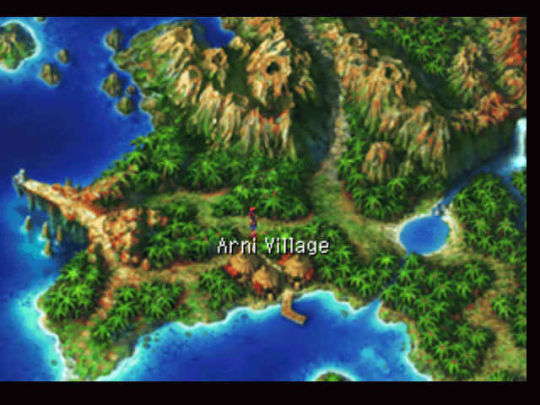
Interestingly, Chrono Cross was the third kick at the can for a sequel to Chrono Trigger. The first, Radical Dreamers, covers part of the same narrative ground. Released only in Japan and exclusively through the Satellaview download service for the Super Famicom, Radical Dreamers introduces some characters that would reappear in slightly altered forms in Chrono Cross, along with a short scenario that would also show up in the latter game. This was only ever meant as a side project, largely existing simply because Kato was annoyed by the loose ends the plot of Chrono Trigger had left. The next potential candidate was the game that would become Xenogears. Initially pitched as an idea for Final Fantasy 7 before another idea won out, it then was planned as a follow-up to Chrono Trigger. After a lot of disagreements, it ended up being its own thing, though it's not hard to spot the connections between it and Chrono Cross.
It was after Xenogears wrapped that Square officially put together a team to create a new Chrono game. The creative talents involved have given some conflicting reasons for the game's dramatic departure from the original game, but the gist seems to be that they didn't feel like rehashing things. They felt doing time travel again would be a cop-out, that a new cast would appeal to potential new players, and that it was important to take full advantage of the new hardware they were working with. As both Tanaka and Kato have strongly asserted, the game's title is not Chrono Trigger 2, so fans probably should not have expected a direct sequel. That kind of feels like a post-hoc excuse to me, but it is what it is.
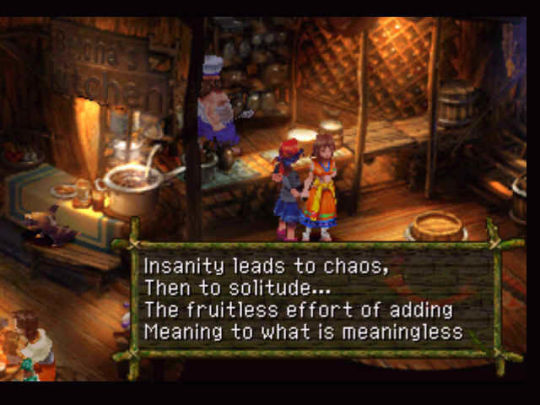
The game released in late 1999 in Japan, but its overseas release would end up coming in August of 2000, not too far ahead of the PlayStation 2 launch. As a highly-anticipated sequel and the culmination of the Summer of Adventure marketing campaign, Chrono Cross came out of the gates like a rocket. The reviews from critics were nearly unanimous in praising the game, with some publications breaking the safety glass on their rarely-used perfect scores to really underline the point. I distinctly recall a major backlash towards American magazine Electronic Gaming Monthly because one of their three reviewers dared to give the game a score of 9.5 out of 10 instead of a perfect score. Given the many shared circumstances between Chrono Cross and Legend of Mana, it's interesting how different the initial reception to each was. But for however much Chrono Cross diverged from Chrono Trigger, it was still quite recognizable in broad strokes. I think that's what saved it from the more immediate negative response its stablemate received.
That said, the negative response did eventually come. It felt like the bigger a fan a person was of Chrono Trigger, the worse they would eventually see Chrono Cross as. Cross had a different, less optimistic tone to it. Rather than focusing on a handful of characters, it chose to spread the love across a huge cast, hoping to fully sell both its world and its high concept. The story broke one of those unwritten rules of fiction. If you give the audience a "happily ever after" ending, revoke it at your own peril. That's just what Chrono Cross did, and it didn't even make a particularly big deal about it. Chrono and Marle died off-screen a long time ago in some random attack from the Porre Army. Lucca's death is an important plot point, but it also happens before the events of the game. Robo at least gets a significant end, but he too does not survive. Ayla, Frog, and Magus don't even appear in the game, with the latter's absence being particularly preposterous as this entire game orbits around his sister, Schala.

Just in case you think you can delude yourself into thinking the main three aren't really dead, their ghosts actually appear a few times during the course of the game. In short, it was all for naught. Nobody from the main cast of Chrono Trigger got a happy ending, as far as anyone can tell. Heck, you didn't even really save the world. This didn't sit well with many players. Others were put off by the lack of time travel, perhaps expecting there would be some instances later in the game. Even those who could get around these attachments to the plot and characters of the first game were faced with an experience that was almost antithetical to Chrono Trigger.
That game was a fairly light, fast-paced, moderately linear game that wore its messages on its sleeves. Chrono Cross, by comparison, is kind of depressed with existence. The pace is slower, the tone is darker, and the messages are muddier. Although the finished game was heavily pared down from the original plan, it probably could have done with a few more editing passes. For every really interesting, thought-provoking point in the game, there are at least two bits that don't seem to have much purpose at all. Maybe that's intended, though.
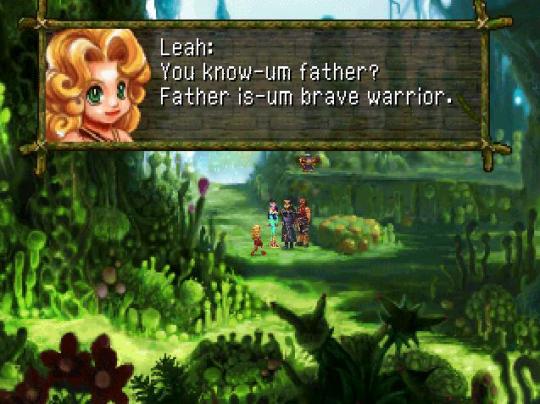
Cross serves as a fascinating counter-point to Trigger in some ways, however. In the latter, your intervention is, as usual for the genre, undoubtedly a good thing. Apart from the early set-up where Marle almost writes herself out of existence, your time-hopping shenanigans never have a negative effect on things, at least as far as you can see. Your presence makes the world a better place, even though you are breaking virtually every fundamental law of nature in doing so. The game ends without addressing this particular karmic debt, and that's fine. It doesn't have to. It's not that type of game.
Chrono Cross has something else to say, though. The premise sees your character Serge traveling to a parallel dimension where he was killed at a young age. After 10 years, this other dimension has a ton of differences compared to your home dimension. The kicker is that many of them make for a better world. Some people are worse off, mind you. But the key is that your existence doesn't make things better for everyone. Indeed, Serge not dying has downright ruined some people thanks to that trusty old Butterfly Effect. One of the more enjoyable aspects of the game is in seeing how people's lives are going in each dimension. At any rate, Serge's death is a good thing for some people. A fact that becomes all the more painful when you discover that Serge was really meant to die. His continued existence comes through unnatural means, and even poses something of a threat to the world order.

This isn't just told to the player, either. There are a number of situations in the game where you have the option to make an active choice versus just passively letting things play out. In some of those cases, your decision to act makes things much worse for everyone, while inaction ends up with the desired result. Like many of Kato's other stories, Chrono Cross eventually ends up being a little bit too on-the-nose with its theme, with a primary antagonist literally named FATE. From a personal point of view, fighting fate is a good thing for Serge. It keeps him alive. But in many ways, it's a purely selfish act of self-preservation. It only accidentally has a good result. Of course, this is all the work of a seriously convoluted plan on the part of Balthasar, the Guru of Time. It seems that pesky old Lavos is still alive and threatens to merge with the missing Schala. Balthasar set all of the events of the game in motion to bring Serge to the point that he could defeat Lavos, preventing it from becoming a Time Devourer and eating all of time and space.
Like the first game, Chrono Cross has multiple endings. The best one involves trying to squeeze out a puzzle-like sequence of special attacks on the final boss, a sequence that you may or may not pick up on from the clues. Should you manage to pull that off, you'll save Schala and be treated to a somewhat bizarre ending where she ponders the meaning of life in the face of evolution and survival of the fittest. It's pretty clearly Kato talking at this point, mind you. Schala concludes that although individual lives may seem to be meaningless if they aren't significant in the evolutionary sense, every being does its part to lead up to those significant examples. Thus, every life is an important part of the chain, so life isn't meaningless after all. Phew, thanks for sorting that one out.

She then signs her letter off in Kid's distinct Australian accent, indicating that her memories have been combined with those of her clone. She promises to find you again someday, sometime. The credits then roll, as a woman who is supposed to be Schala can be seen wandering around various locations in modern-day Japan. It's apparently meant to signal to the player that their very own Kid might be out there somewhere, searching for them. It really only works if you live in Japan, though, since the locations they picked are probably not going to strike a chord with anyone else. To be honest, this is a game full of good ideas and compelling situations, but its main plot ends up collapsing on itself in a way that is highly characteristic of Square games from this era.
This was only my second time playing the game, if you can believe it. I really enjoyed it the first time, but I was definitely high on hype. I wasn't sure how I would end up feeling about it after so many years had passed. I've seen my opinions of Square games I once held sacred turn around in big ways before, and I worried that this might be one of them. At the beginning of the game, as I was enjoying the music, brightly-colored sights, and interesting set-up, I felt that I had perhaps underestimated Chrono Cross. The further in I played, however, the more it started coming back down to Earth. There are too many inconsequential characters, the storyline loses its coherence partway through, and the battle system takes a little too long to sort through in basic skirmishes. This is also a game that virtually demands a guide, and even with one, you're not able to see everything in one playthrough. That's fine, but I don't know that I really want to play this again for a long while. Even the first time, when I was absolutely in love with it, I moved on to other things after getting the best ending.
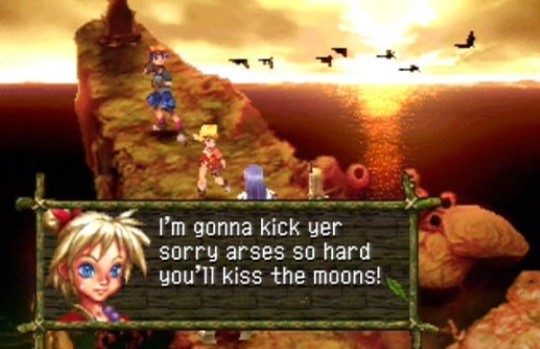
Being a little older and more experienced, I can certainly appreciate some of the ideas the development team tried to apply to the mechanics. That final boss "puzzle" is pretty bad, but in most other respects, I think the element system that governs skills and item use is quite clever. It's a little too restrictive early on, but I like the idea of forcing players to choose carefully what they want in their toolbox. It's a good idea to have a diverse set of skills ready, but if you want to take advantage of field effects, you have to stack certain elements. You might also want to set up a custom set of elements for individual bosses in order to exploit their weaknesses. The only real down point is that this involves a lot of micromanagement that quickly becomes tiresome and isn't totally necessary. I suspect most players will just roll with a general load-out of elements and only change out individual pieces now and then.
I'm always interested in how games try to circumvent grinding. It's been an issue virtually since the inception of the RPG genre, and it's honestly debatable as to whether it's something that needs to be addressed. If players like it, why not give them the option? I guess the problem is that while grinding is often the path of least resistance, it's not fun for everyone. Since it's the most mindless thing to do, people will opt to do it in lieu of trying to reconsider their strategies, even if they don't enjoy it. That leads to people coming away with a poor impression of a battle system that probably would have thrilled them if they had played it without grinding. I think the Japanese focus on intricate combat systems naturally results in designers trying to crack this particular nut.
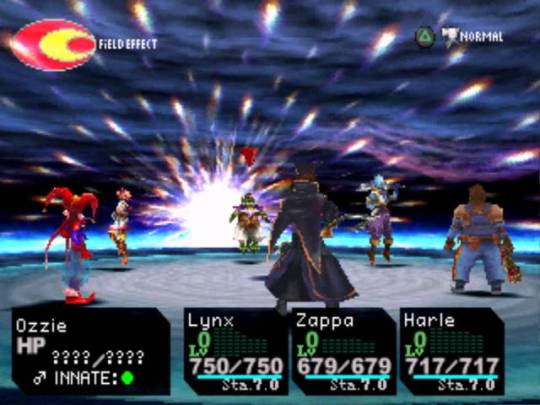
Chrono Cross's approach is to put in hard gates on growth that are connected to your progress in the story. You're given a star ranking that determines how far your party members can grow. Your stats will only see so many gains until you earn a new star by clearing a story boss of some sort. There are other incentives to battling enemies, such as giving you drops that you can use to create new equipment, but you can't simply grind your way past a tough boss. You have to plan your way through it. Luckily, one of the other unique quirks of Chrono Cross assists with that. You can run from any encounter, up to and including the final boss. No, it doesn't make sense from a narrative standpoint, but it makes this one of the fairer RPGs around. Go in, see what elements will serve you best, and if you don't have them, escape.
I think it's that desire to pick away at the accepted standards of the genre that ties the game to its predecessor more than anything. Unfortunately, that's the least likely thing to be appreciated by fans looking for more of the thing they liked before. On top of that, the desire to push the genre in new directions doesn't always work out the way a game's creators might hope for. I don't think anything in Chrono Cross went spectacularly badly, but not many of its innovations proved to be influential. That goes hand-in-hand with its weaker reputation compared to that of Chrono Trigger.
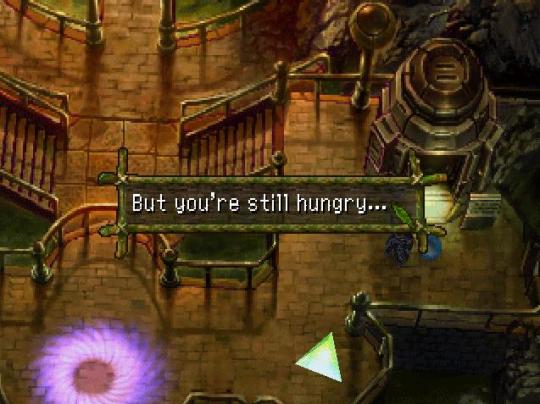
While Chrono Cross isn't entirely forgotten, it does seem like the series as a whole is finished. Chrono Trigger probably has a lot of re-releases in its future, but I'm less confident that Chrono Cross will show up again as anything other than a PSN download. Even Kato's attempt to tie the two games together more strongly in the Nintendo DS port of Chrono Trigger failed to re-ignite interest in Cross. I suppose that speaks to the difficult balancing act that sequels have to pull off. If a game rehashes too much, it will never escape the shadows of those that came before it. On the other hand, if the developer either fails to or chooses not to recognize the qualities that fans appreciated in the original game, history can be swift with the write-off there, too.
It's often the case that when I replay a game, I come away with greater clarity concerning my feelings about it. But even after making my way through Chrono Cross again, I find it hard to nail the game down. I kind of love it. I also kind of hate it. I wish they had cut the fat off it as much as they had with Chrono Trigger. Some of the themes it brings up are brilliant, but others seem like so much belly-button fluff. I think it's a more interesting, more challenging game than Chrono Trigger tried to be. That it failed in many of its ambitions doesn't affect the respect I have for that particular approach. Some small part of me, however, would have been far happier with a safe sequel in this case.

Previous: Threads of Fate
If you enjoyed reading this article and can’t wait to get more, consider subscribing to the Post Game Content Patreon. Just $1/month gets you early access to articles like this one, along with my undying thanks.
1 note
·
View note
Text
New Horror and Sci-Fi Movies Break Out at Fantasia Fest
https://ift.tt/3eSvxiF
The Fantasia International Film Festival has been serving up fresh and often visionary new voices in sci-fi, horror and other genres for nearly a quarter of a century, and this year’s 24th edition was no different — except, of course, it was all different.
Fantasia, which under normal circumstances physically takes place in Montreal in mid-summer, went online in 2020 for an all-digital edition that kicked off on August 20 and concluded on September 2. The event was a mix of films that were either available on demand at any time throughout the fest (up until a maximum ticket capacity was reached) or were designated to stream “live,” as it were, on one or two certain dates at specific times (also with a maximum ticket capacity).
Although press from around the world was invited to cover the festival, the entire program was geoblocked to Canadian ticket buyers only — which means that as a fan you would have to live in Canada to watch the festival offerings online (this was due to exhibition and distribution restrictions for other parts of the world). In addition, a handful of films — including The Descent director Neil Marshall’s new one, The Reckoning — were available only to a limited list of select guests.
Whether these kinds of restrictions helped or hindered the festival’s transition to an online format remains to be seen. On the other hand, our experience watching films was flawless, with no buffering or other technical problems during a single screening. That aspect of holding a digital festival was handled perfectly.
Less perfect, to be frank, was our personal experience. Being at a film festival or any large event or conference is like being in a bubble where all you do is focus on what you’re there to do; trying to do the same on your couch or at your kitchen table, with all the distractions of home, family, work and other elements of everyday life was way more challenging.
We didn’t watch as many films as we wanted to, but the highlights only proved that Fantasia’s longstanding reputation as a breeding ground for provocative, groundbreaking new talent will stay intact for this year and beyond.
HBO Max
Class Action Park (USA)
Our favorite film of the fest — which you can see right now if you’re lucky enough to have HBO Max — is this wild look back at a New Jersey water/amusement park where there were no rules, anything could happen and the lunatics (i.e. severely underqualified teenagers) were literally running the asylum. It was all fun and games… until it wasn’t, as the injuries, lawsuits and tragic deaths began to pile up.
The documentary delves into the history of the park, which was hatched by the insane/genial Eugene Mulvihill, the unsafe rides that he developed, the crazy atmosphere of the place and the tragedies that brought it down. But like all great docs, Class Action Park is also about an era — a snapshot of a time (the late ‘80s and early ‘90s) when kids were allowed way more freedom than they are now, with results that one could view as both good and bad. It’s a sobering, thoughtful and, yes, hilarious film. (****½)
The Department of Special Projects
Fried Barry (South Africa)
Think of this as the hard-R version of E.T. A heroin addict named Barry (stuntman Gary Green in an astonishing first-time performance) is airlifted from a Cape Town street into an alien spacecraft, painfully probed and dropped back down — only his body is inhabited by an extra-terrestrial explorer. The next few days are a wild, often gruesome yet oddly poignant journey in which the alien/Barry trips on drugs, dances the night away at a club, is brutally tortured, has sex with multiple women, becomes an instant father, rescues children from a predator and even reconciles with Barry’s own family.
Writer/director Ryan Kruger adapted this from his own short film and, as with several other movies we saw, occasionally has trouble stretching it to feature length. But what could have been a nihilistic mess becomes something alternately funny, shocking and moving, in a story about loss, addiction and love anchored by Green’s fearless performance and Kruger’s gorgeous, stylized direction. (****)
Magnolia
12 Hour Shift (USA)
12 Hour Shift was like a refreshing cool drink after watching some of the darker entries at Fantasia. We haven’t seen Angela Bettis (May) in a few years so she is a welcome and sensational presence as a night nurse in a Texas hospital running a side business in organ harvesting with her supervisor. Chloe Farnworth is equally great as her beyond-dumb cousin who delivers the organs to the gangsters running the black market, while David Arquette shows up as a dim bulb cop-killer who’s stuck in the ER.
Grisly mayhem and gooey twists ensue, and while it’s nothing you haven’t seen before, Bettis’ implacable calm keeps it all grounded and grimly hilarious. Writer/director Brea Grant allows herself a few self-indulgent moments, but overall this is a lot of fun. A faux-bombastic score heightens the humor. Watch for this on October 2 from Magnolia Pictures. (****)
Ben Hozie
PVT CHAT (USA)
From writer/director Ben Hozie (frontman of the band Bodega), this is a smart, erotic psychodrama about who we think people are and who they really are, against the backdrop of live sex chats and relationships via screen (the latter all too relevant in these shelter-in-place times). Peter Vack is great as Jack, who gambles online by day and spends his winnings at night on those aforementioned chats. His object of desire is cam girl Scarlet (Julia Fox, alluring in what was technically her first role before Uncut Gems), who seems to enjoy her work while tentatively exploring a deeper connection with Jack.
Hozie captures a pre-pandemic lower Manhattan vividly, and while the movie evokes an undercurrent of dread it never resorts to the predictable idea of making Jack a straight-up incel. The plot’s turns are clever and true to the characters, who gradually reveal their vulnerabilities and yearnings. It’s a small film, but it says a lot about love, loneliness and sex in the age of virtual life. (****)
Unstable Ground
Clapboard Jungle: Surviving the Independent Film Business (Canada)
Justin McConnell is a Canadian filmmaker who has directed two low-budget features but finds it as hard as ever to get a single one of his next potential projects (his “slate,” as he hopefully calls it) financed and produced. This documentary, which McConnell assembled over five years, charts the ups and downs of his quest while offering insight from dozens of artists — including Guillermo Del Toro, the late George A. Romero, Mick Garris (director, 1994’s The Stand), Larry Fessenden (director, Wendigo), John McNaughton (director, Henry: Portrait of a Serial Killer) and others — about the difficulties of independent filmmaking.
McConnell’s saga is a fascinating one and his resiliency in the face of defeat after defeat is at times inspiring. Some of the film plays like a checklist as he tackles various aspects of the business (to his credit, he even offers a clearly late-breaking section on the even more challenging environment facing women and filmmakers of color), but it’s still a worthy guide for anyone who dares to travel this path. (***½)
RLJE Films/Shudder
The Dark and the Wicked (USA)
Writer/director Bryan Bertino scared the living hell out of audiences back in 2008 with The Strangers, and while his pictures since then are few and far between and somewhat hard to see, his latest will benefit from a release through Shudder later this year.
In the meantime, we can tell you that Bertino has not lost a step when it comes to crafting utterly skin-freezing imagery and sequences. Siblings Louise (Marin Ireland) and Michael (Michael Abbot Jr.) return to their family’s rural farmhouse to help their mother as their comatose father enters his last days, despite their mother’s entreaties to stay away. Brother and sister learn all too soon that something has come for their family and will not stop.
Read more
Movies
The Best Horror Movies to Watch on Shudder
By Rosie Fletcher
Movies
Best Horror Movies on Amazon Prime Right Now
By Alec Bojalad and 2 others
Bertino works economically with both his direction and script, sketching in just enough about this family to create the necessary empathy and aided greatly by sterling work from Ireland and Abbot. The atmosphere is thick with dread from start to finish, and the images shocking and nightmarish. If The Dark and the Wicked leaves you with a few more questions than you’d like, that’s okay…this is still a genuinely unsettling watch. (***½)
Film Movement
Lapsis (USA)
Filmmaker Noah Hutton — who wrote, directed, edited and composed the score — sets his full-length feature debut in a sort of alternate universe that’s very similar to ours but sitting perhaps a few more minutes in the future. The excellent Dean Imperial (who has a James Gandolfini vibe about him) stars as delivery man Ray Tincelli, whose ailing brother’s mystery ailment forces Ray to join the gig economy. He becomes a “cabler,” one of a growing legion of freelancers who are literally laying cable across miles of rugged terrain for a quantum computing network that will revolutionize the financial markets.
Everything about the company and tech is enigmatic, as are many of the people that Ray meets along the way, and he discovers that the cabling “medallion” or permit he’s purchased may have previously belonged to an unsavory figure. Lapsis uses its subtle sci-fi trappings to tell a tale about real life, with workers fighting for whatever scraps they can get and wealthy oligarchs literally stringing them along. Lapsis is a slow burn, with a final scene that’s a bit of a head-scratcher, but Hutton has crafted a very distinct, pertinent vision. (***½)
Epic Pictures/Shudder
Lucky (USA)
Brea Grant also wrote and stars in Lucky, an allegory about a self-help author named May who is stalked — every night — by a masked killer who she keeps mortally injuring yet who keeps reappearing. Reality itself begins to fracture around her as she confronts events from her past and begins to realize what is happening to her and the other women in her life.
Lucky stretches a bit too much to sustain itself effectively over its relatively brief 80 minutes, but this is still a movie with vision and guts from director Natasha Kermani. Its central metaphor for the unending assaults faced by women every day is an unquestionably powerful one, driven home by an extended third act sequence in a parking garage that’s hard to shake. Shudder will stream it at a date TBA. (***)
Relic Pictures
Minor Premise (USA)
This intimate sci-fi thriller is steeped in neurophilosophy — and be warned, there’s a lot to keep up with here. Sathya Sridharan stars as Ethan, a brilliant young scientist who’s obsessed with living up to his father’s legacy while forging his own path. He creates a device that maps out memories and emotions in the brain, but his attempt to try it on himself shatters his psyche into 10 different emotional states, each surfacing for six minutes per hour.
Ethan and his ex-girlfriend (Paton Ashbrook), an ambitious researcher herself, try to piece his mind back together while avoiding the states of rage and psychosis that emerge once every cycle. The repetitive nature of the film and some stylistic choices by director and co-writer Eric Schultz drag its pacing down, but the two main performances are strong and the concept is fascinating and at times frightening. Minor Premise is ambitious and cerebral, if a little too dense, and still an intriguing trip. (***)
Global Screen
Sleep (Germany)
A woman (Sandra Huller) plagued with mysterious nightmares begins to piece together the visions she’s having, a puzzle that leads her to a secluded hotel in a small, desolate town in the German countryside. Once there, she has a nervous breakdown, landing her in the hospital and leaving her daughter (Gro Swantje Kohlhof) to discover the dark secrets hidden in the hotel and the town.
A feature debut from director Michael Venus, Sleep is assured in its vision and imagery even if it’s derivative of David Lynch and other practitioners of the macabre. The movie moves at a leisurely pace and Venus transitions seamlessly from reality to dream, but there is a sense of ambiguity at the end that leaves one both unsettled and vaguely unsatisfied. (***)
Hood River Entertainment
The Block Island Sound (USA)
The Block Island Sound, the new film from Kevin and Matthew McManus (Cobra Kai), would actually make a good pairing with The Dark and the Wicked in that they are both about families besieged by forces beyond their understanding. In this case, the Lynch family, who live on Block Island off the coast of Rhode Island, seem to be the target of an assault from above — an attack that is also doing macabre things to the local wildlife.
As with Bryan Bertino’s film, the family patriarch is the first to succumb, while his marine biologist daughter (Michaela McManus) and troubled son (Chris Sheffield) must contend with the fallout. The Block Island Sound has great cinematography, sound design and music, but is hampered by uneven acting and a somewhat undercooked script that shows its cards early and doesn’t really go anywhere from there. (**½)
Rivertop
Monster Seafood Wars (Japan)
A light, trifling satire of kaiju flicks, Monster Seafood Wars plays off the idea that the Japanese people are accustomed to having their cities leveled by giant monsters on a regular basis. Thus the latest siege by a giant octopus, squid and crab is business as usual, with restaurants even obtaining chunks of “monster meat” and serving it up in gourmet dishes as the latest culinary craze.
The film also pokes fun at youth culture, with the film’s three main scientists not just somewhere in their early 20s but sharing a romantic conflict as well. The movie’s kaiju costumes and green screen effects are deliberately cheesy and you’re meant to relax and have fun, but the movie labors hard to be truly funny and not just an oddity. (**½)
Trapdoor Pictures
The Mortuary Collection (USA)
“The world is not made of atoms, it is made of stories.” Too bad the stories in this anthology film don’t live up to those opening lines. Writer/director Ryan Spindell clearly loves the old Amicus portmanteau films, Creepshow, Tales from the Crypt and others, but his beautifully shot and handsomely designed tribute rarely comes off as more than a surface homage.
The framing device stars Clancy Brown (The Flash) in heavy prosthetics as a mortician who welcomes a cynical young woman (Caitlin Custer) into his funeral parlor and shares stories about some recent clients. There is some attempt at atmospherics and lots of gore, but the scares are non-existent and the stories just sort of sputter out without the punchy endings often associated with this subgenre. (**½)
Copperheart Entertainment
Come True (USA)
For Come True, writer/director/editor/cinematographer Anthony Scott Burns has come up with some truly eerie dream imagery, but the story he built around it is tedious and incoherent. Sarah (Julia Sarah Stone) desperately craves sleep and participates in a dream study that unleashes…what?
The movie never really fleshes out what is happening, while both its script and characters remain maddeningly vague. Throw in a sketchy love story between the very young Sarah and the lead scientist and it gets even creepier in the wrong ways. A misfire all around that sent us quickly into dreamland. (**)
The post New Horror and Sci-Fi Movies Break Out at Fantasia Fest appeared first on Den of Geek.
from Den of Geek https://ift.tt/2Gyxp41
0 notes
Text
The Saga of the Swamp Thing and the trouble of writing comic book reviews.

So, I recently finished finished reading The Saga of the Swamp Thing (or as it’s known in more modern terms, Swamp Thing volume 2). As with every comic (and most things) I finish, I want to review it. This poses a problem, as Swamp Thing is 171 issues covered by a massive amount of different staff members with low cohesion beyond canon. Pasko’s Swamp Thing is vastly different from Moore’s from Collin’s from Millar’s and so forth. This makes it difficult to review as one piece even if I can define it with a beginning, middle, and end. I’ve reviewed comics before without problem. Even comics with multiple directions (such as Miracleman) but not on such a massive scale.
Really, the writing isn’t even the thing that makes it hard to review. I can cover disjointed writing. It’s the disjointedness of everything. In visual mediums, I like to review the visual design, and swamp thing has passed through the hands of so many artists that even recalling all of them is incredibly difficult. I can give kudos to Tatjana Wood’s coloring for by far being the most consistent thing in this comic book. So rather than formatting this like I like to on my other blog, I’m going to give this a more messy crazy whirl.
(If you’re here after Alan Moore’s Swamp Thing and just want to know if you should read the rest jump down to the very bottom (past issue 171))

To start off, let me acknowledge that this is a sequel, and should be treated as such. Since the end of the first volume, Alec Holland is Swamp Thing again (this happens in Challengers of the Unknown, but for all intents and purposes treat the last 2 issues of volume 1 as non-canon, life will be better that way.) Swamp Thing finds a peculiar situation, a man trying to kill his daughter whilst declaring her the anti-christ. Swamp Thing saves her, and thus starts on his next great arc. Unlike the individual stories of volume 1, volume 2 is more arc based. This is for better and for worse, the stories have more character, more plot, and more impact, but also this can lead to dragging and near filler. Generally I’d say it’s just alright in the first few arcs, they’re interesting but unmemorable. The story really picks up in issue 16 with a few character reintroductions, and we’re off to the races from there. Swamp Thing is a famous comic book, and for good reason. The next arcs are a work of brilliance, taking the horror hero concept through some truly interesting reconstructions with absolutely brilliant writing and amazing visual design.

While it’s no painting, the cohesion between writing and visuals is near perfect. You can tell the team was skilled and in alignment. The Love and Death arc of this series is both an amazing story, and the arc that broke the comics code. This marked the evolution of swamp thing from the newspaper stand kids’ content to the saga of respectable storytelling we now hold comic books to be (at their best at least). But no gold rush lasts forever, and the other side of the 50 mark the series begins to cool down into an interesting but only somewhat above average niche it slides into by 100. After that, the series gets turbulent in some interesting ways, which each consecutive writer having drastically different visions and some moments that changed the story almost as much as The Anatomy Lesson did. Your mileage on the post-100 side of swamp thing will probably vary a LOT, with different tones both thematically and visually throughout the rest of the series. If you were to show me issue 166 and tell me it’s the same comic as issue 66, I would find it incredibly difficult to believe you (assuming I weren’t accustomed to these massive changes.) I can say however, that the final ending of the series is a true highlight. It pulls from the legacy of the character into quite a unique finale.

So, here’s the question. Do I recommend Swamp Thing volume 2? Short answer, yes. Long Answer, maybe? It’s status as an un-cohesive story makes it hard to recommend. Most people would recommend issues 21-64, but I’m not sure I agree. I do recommend it from the start, knowing that it will get better. Issue 64 is a great ending, and the only good drop off point until the very end. I can with little doubt recommend up to there. Beyond that is less of a solid go. I firmly believe if you carry on past that point, you will at some point grow distaste with the series. It can be all over the place, and at times I thought to myself “I’d enjoy this story if it were it’s own thing and not Swamp Thing” but I found the experience to be worth it in the end. The transition from 64 to beyond is a bit rough, as 64 feels like a good point to end end the series, but it continues on with a writer who’s clearly not as good as the writer before him. When Nancy A. Collins comes along in the early 100s, she drastically changes the tone, and with Millar starting work on the series it becomes almost unrecognizable as anything before it. I do think, despite all of this, it comes together as one good piece. I think most people will grow to dislike the series at some point, but only temporarily. So if you find yourself at issue 64 and want more, I advise you to carry on, but know it will be a crazy and imperfect experience.
Rating this series in final is difficult, at any point it was somewhere between a 6 and a 9, but usually floated around 7. Overall I think I’ll give it a 7.5, albeit a very interesting 7.5
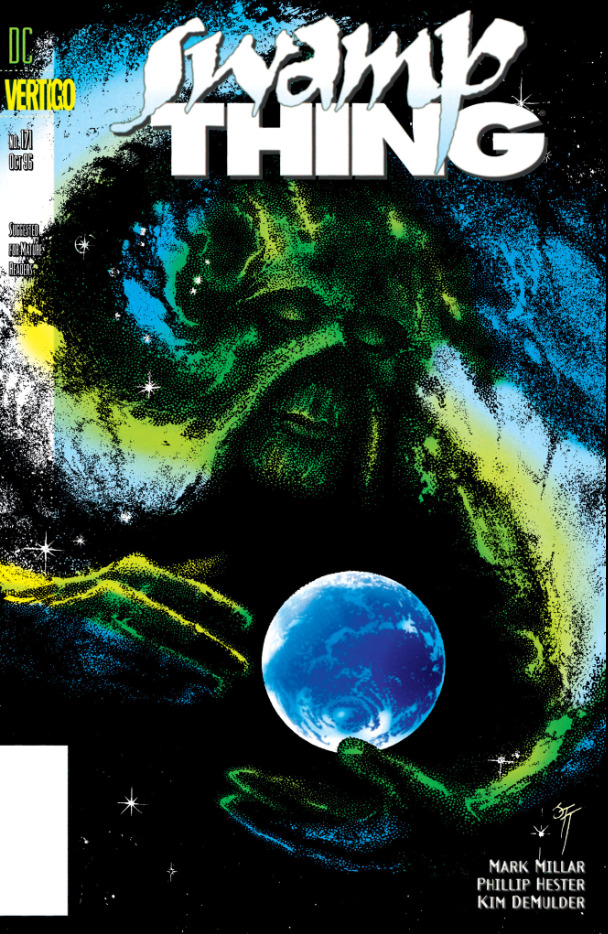
So, here’s the gloves off spoilers in section. If you’ve never read any of swamp thing volume 2, I implore you to take your leave here. This is mostly for those who have read Moore’s run. I’m going to do a run by run break down. Martin Pasko’s run (1-19) is fine. I found it enjoyable, mostly towards the very end, and it lays the groundwork for some stuff that will pay off later. Really, throw issue 20 into this as well, as it’s just an ending piece for this run. I think it’s a fine enough lead up to the Moore run, but if it existed in isolation I wouldn’t remember it one bit. I recommend it for first time readers, but if you’ve already read beyond it there’s no real point in going back to it. The Moore run (20-64) explains itself. It’s famous. It’s pretty awesome. I generally liked it, even if I didn’t love it. It’s not my favorite Moore work because I don’t think it builds on itself all that well, but the good parts are damn good and art and prose are excellent. I really feel like the space arc was definitely in the territory of “more neat than interesting” but it was a good read nonetheless. oh god my cat wants attention he’s so adorable aaaaaaaa Everytime i type he paws at me for attention ok he went to go do something else. Okay so, Rick Veitch (65-87). Veitch worked as an artist with Moore, so he and Moore are very much on the same page. Despite Moore closing the book in 64, Veitch reopens it with something that feels consistent. The nearly logical next step, the problem is Veitch is not Moore. Veitch had a shitty job, of following that up. He did it the best he could, but he just wasn’t as skilled. If you want more Swamp Thing, it will give you that, but if you want more ground-breaking comics kino, you’re out of luck. It’s a fine read, but the gap is noticeable. The other problem with Veitch is that due to the issue 88 fiasco, his plot didn’t finish by his own hands. Some people read just Veitch, but his ending isn’t an ending. He was supposed to be followed up by Gaiman (who wrote the excellent annual 5), but the issue 88 fiasco made Gaiman also back out. While this was a pretty damn respectable move on Gaiman’s part, it makes me sad wondering what that run could have been. Doug Wheeler (88-109) came in and finished up the arc and then wrote his own war epic, Quest of the Elementals. While Wheeler is a lot of the times criticized as being the bottom of the barrel for Swamp Thing, I found him to be about on par with Veitch. Interesting, but not remarkable. I do give him credit for having an actual ending to his run, which I suppose could be used as an ending point for the series but it’s clearly an arc ending and not a story ending. Then Nancy A. Collins comes in (110-138). Her Swamp Thing is tonally quite different. It’s a much slower, toned down Swamp Thing. A lot of times people describe it as being closer in tone to the pre-Moore era. I liked how it spent more time developing the supporting cast and actually giving Swamp Thing time to be at home with his family. The run was almost comfy until right after the move to Vertigo, it stopped being so. I don’t know why, but on the way out Collins decided to break the status quo, leaving a really unhappy ending. The early parts of her run were some of my favorite parts of Swamp Thing in awhile, but the ending was just upsetting. This is followed up by a one issue Black Orchid crossover, which is neat I suppose. Then we get to Millar (140-171). He starts out his run working with Grant Morrison in this 4 issue story that’s almost pure insanity. It was interesting, but really was a prologue to Millar’s greater run to come. At first I did not like Millar’s run at all. A fuckload had changed. The art was in this simplified, dynamic style that contrasted abrasively with the prior style. The story had become lonely and quite a dark downer, but it picks up. The first real arc, Parliament of Stones, is the biggest offender of being both a downer and not very good. I think from here, it really starts to improve. It still is pretty dirty and down, but it’s got a bit more humanity to it rather than just being shitty for shitty’s sake. The last stretch, Trial by Fire, was quite fantastic. It makes real good on the size of the Swamp Thing legacy, running this clearly Alan Moore like story, and just keeps pulling brilliance out until it ends on an ultimately upbeat note.I see why Millar’s run is the most recommended past Veitch, but it really is rough getting used to. Ultimately though, it justifies both itself and a lot of the weight that the series has gained.
1 note
·
View note
Link
Every week, Vox critic at large Todd VanDerWerff and culture writer Karen Han get together to discuss the latest episode of NBC’s loopy comedy The Good Place. This week, they’re discussing the sixth episode of the third season, “The Ballad of Donkey Doug.” (Because the first two episodes aired as one installment, the episode number is one ahead of the number of weeks the show has aired.) Spoilers follow! Proceed with caution if you haven’t seen the episode!
Karen Han: While watching “The Ballad of Donkey Doug,” I was reminded of what Todd said a couple weeks ago about the early part of the season, in that it seemed like The Good Place was going to have to put on its running shoes and sprint in order to ever surpass the high bar it had previously set for itself, and shake off the relatively slow start to the season. While “The Ballad of Donkey Doug” actually made me tear up — and laugh out loud more than once — I’m not sure it reflected the show hitting the stride that we thought it would.
That the gang is split up into smaller groups isn’t as much of a sore spot here as it was in previous episodes (Eleanor, Chidi, and Janet go one way; Tahani, Jason, and Michael go another), but not having everyone together still slows down the action. Watching Eleanor and Chidi workshop how Chidi could break up with Simone was both sad and hysterical (who hasn’t had to deal with that kind of anxiety?) but it felt like filler to me. Removing Simone from the equation seemed designed to inch the season’s plot forward while keeping Eleanor and Chidi in the episode, as Jason’s journey to help Donkey Doug — who was revealed to be his dad — allowed the episode to meet its moral development quota.
Or maybe I’m still adjusting to the fact that The Good Place has fundamentally altered its characters’ motivation. Now that they can’t get into the Good Place, more of their energy is directed toward helping other people, rather than toward their own self-improvement.
Then again, that’s why Jason’s storyline works. It’s the deepest dive the show has taken into his past to date, and, like Chidi’s break-up, though all the Florida insanity is funny, it’s semi-tragic, too. I mean, the fact that Jason calls his dad Donkey Doug stems not from how dope the nickname is but from the fact that his dad doesn’t really dig the idea of taking on a father’s responsibility.
I feel like my conflicting emotions about the episode are driving me into Chidi “I’ve made my decision, I want … to start crying” territory. Todd, maybe you had a little more success in parsing it all out.
Here’s another photo of Tahani, though Michael is also in this one. Colleen Hayes/NBC
Todd VanDerWerff: “The Ballad of Donkey Doug,” so far as I can tell, represents The Good Place’s new status quo. Instead of being about its characters trying to help themselves, it’s now going to be about them trying to help their other loved ones, the better to help said loved ones avoid the Bad Place. Which isn’t bad as a premise for trapping everyone on Earth, even if it kinda leaves Michael and Janet without a lot to do. (Janet makes up for it by saying, “Bing!” every time she does something, because she misses her sound effects so.)
That may be why the Chidi side of this episode, which I would agree wasn’t on the same level as the Jason side of the episode, felt a little extraneous. Yeah, we probably need to know what happens to Simone, but I’m not sure an entire B-plot was necessary in the end. Plus, it’s wrapping up old business, instead of exploring new ideas.
It’s mostly an excuse to set up the fact that Janet has constructed an elaborate virtual reality simulation, which means she can effectively put people in an unreal world to test things out. This lets the show keep some of its “wild and surreal things can happen” tone, but almost everything that happened in the Chidi half of “The Ballad of Donkey Doug” seemed like it was blazing along at light speed, so I never had the chance to go, “Wait, what?” Maybe the breakneck pace was meant to gloss over Janet inventing seamless virtual reality, but I still felt like the show was on step 17 when I was still on step one.
(Sidebar: So far, it hasn’t broken the show, but the fact that Janet is functionally omniscient feels like something the writers either have to lean into or work hard to neutralize. So far, they’ve done neither and haven’t quite nailed the balance.)
That said, the Jason side of “The Ballad of Donkey Doug” is truly wonderful. The reveal that Donkey Doug is Jason’s dad is terrifically funny, and Michael and Tahani’s utter amusement at all of the circumstances of Jason’s upbringing made the story click even more. If this sort of story is where The Good Place is headed, I’m intrigued. If, instead, we’re just going to see a bunch more attempts to recreate the wild, anything goes atmosphere of the afterlife here on Earth, the show might start to chase its own tail too much for me.
Karen: I do wonder if we’re seeing a case of Chekov’s virtual reality simulation, given that there’s never a Good Place detail that hasn’t turned out to serve a purpose. (Or maybe I’m just overinvested in Eleanor’s Jason Statham fantasy. Girl, same!)
I’m also not entirely convinced that the new ideas we’re seeing are new enough. Jason’s half of the episode really was great (his tearful secret handshake with Pillboy is a work of art), but it looks like The Good Place is setting up what I’m going to refer to as a video game scenario: We’re seeing the characters help other people, yes, but they’re doing so by working through their own stories in a way that doesn’t feel organic so much as it feels like steps leading up to a grand finale. Jason has achieved closure, now it’s time for Tahani and Eleanor to do the same.
I think that’s why I was ultimately disappointed that “The Ballad of Donkey Doug” ended on the reveal that Eleanor’s mother is still alive, not least because it means the gang will be divided up once more. The only upside is that what comes next looks like it will be evenly balanced, as opposed to one side of the episode functioning as pure fluff, à la Chidi’s ordeal this week.
On that same token, though, what you said about The Good Place being on step 17 while we’re still on step one is enough to make me reconsider. Again, this is a show that does everything deliberately; so far, nothing is without a purpose, and maybe I should trust that this season is built the same way.
Lest we forget, everyone is still on the Judge’s shit list, which means there’s a cosmic reckoning waiting for them at some point. And I get the feeling that season three won’t end until we see some more moral hemming and hawing from our party’s supernatural contingent of Michael and Janet. Or maybe I’ll just end up eating my hat on all of this.
That baseball cap is great. Colleen Hayes/NBC
Todd: No, you’re right on that account, and the video game idea is astute. The characters are embarking on some side-quests to help characters who drop in pretty much for a single episode, then leave the narrative. I mean, I’d love to see Donkey Doug and Pillboy become series regulars, but it strikes me as unlikely.
There’s also the rub that the characters can’t tell anybody about the whole Good Place/Bad Place system, because that would make it impossible for anyone they tell to get into the Good Place. That pesky little detail complicates every relationship they have with anybody who isn’t one of the other series regulars.
The Good Place has always been a pretty insular show, but at least in the afterlife, we had figures like the Judge and Trevor and Vicky and on and on, characters who would pop in just frequently enough to keep the story moving. So far, the Earthbound antics haven’t developed the same set of supporting characters, and any time someone like Trevor ends up hanging out with our heroes, he’s quickly written out.
I think the virtual reality of it “The Ballad of Donkey Doug” bugged me just a little bit because — so far, at least — it has no bearing on the show’s larger reality. It was fun to watch William Jackson Harper run through a bunch of possible versions of breaking up with Simone, just as it was fun to see Kristen Bell play Eleanor slowly realizing she’s into Simone, at least in the simulation. (And, really, why don’t more men say they’re bisexual? It’s 2018!) But it’s inherently a story that runs in place, a comedic conceit that works in a scene but can’t carry a whole storyline. Chidi’s gutted feeling when he finally does break up with Simone is inherently more interesting, but the show buzzes right by it.
And yet the virtual reality stuff made me think about the simulation hypothesis, which Elon Musk (a particularly loathsome Tahani ex, it turns out) was obsessed with for a while there. The idea is that we live in an incredibly advanced simulation, created by descendants of people very like us, designed by them to get a sort of window into their past. It posits that we are, in essence, the Sims, but with autonomy. Or something like that.
The major philosophical question raised by the simulation hypothesis is — how do we behave morally if we live in a simulation? And the answer is simple: It doesn’t matter. The moral code you live by doesn’t change one iota, because even if you’re somehow aware of the simulation, it doesn’t make the people around you, or your interactions with them, less real. You still have a responsibility to them. We all still owe each other kindness and sincerity.
So maybe there’s more to “The Ballad of Donkey Doug” than I’m giving it credit for. But nearly halfway through season three, I’m increasingly concerned The Good Place is trying to extend its old heavenly delights to the planet Earth and struggling with just how little our reality affords those kinds of opportunities. In the Good Place, you can jet all over the universe in an instant. On Earth, it still takes the better part of a day to get from Australia to Florida, to say nothing of going back again.
Original Source -> The Good Place settles into a new status quo in “The Ballad of Donkey Doug”
via The Conservative Brief
0 notes